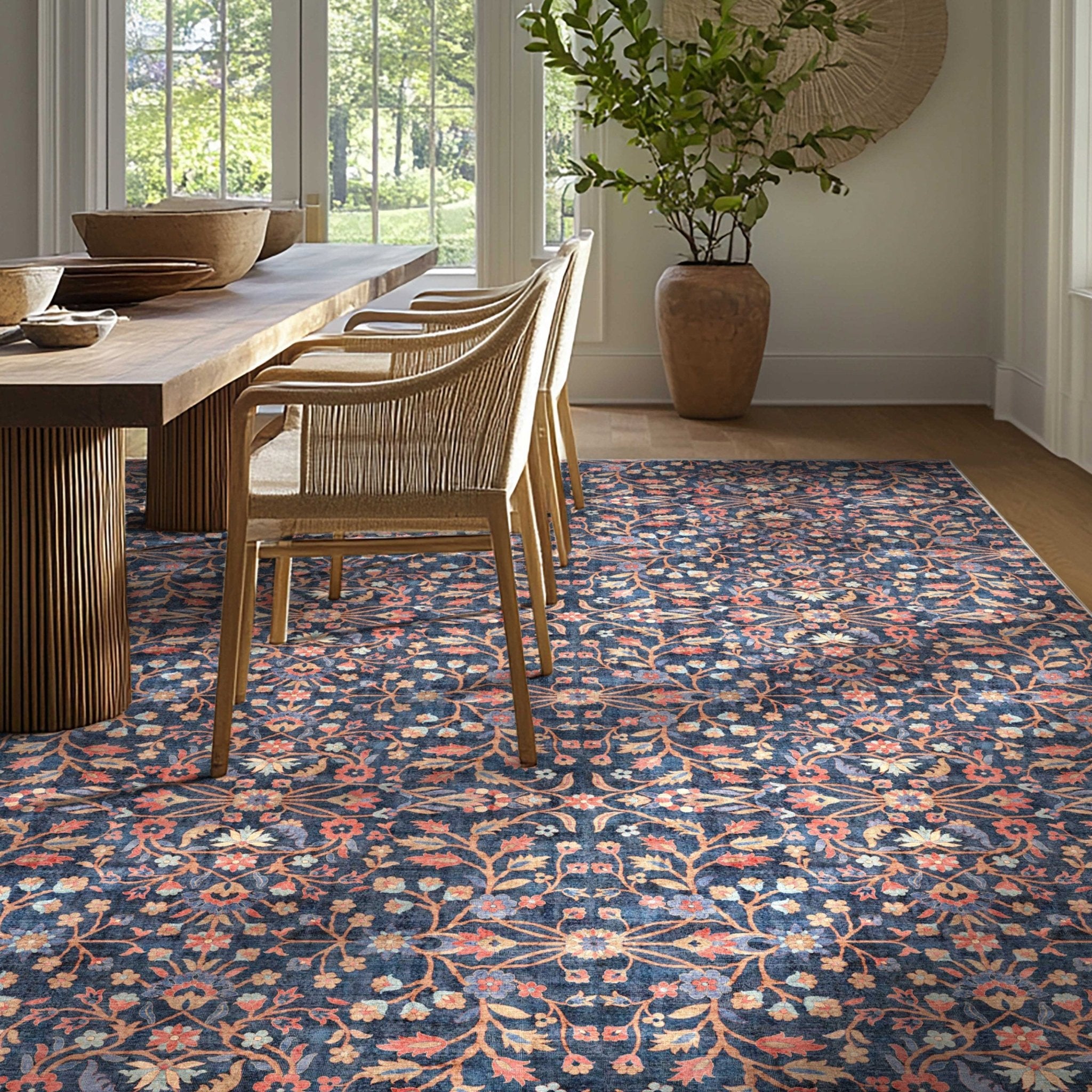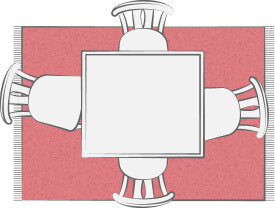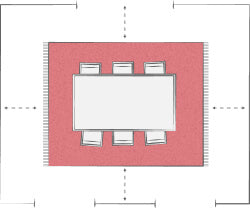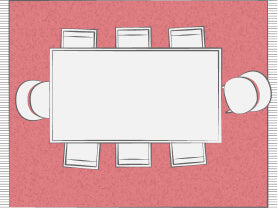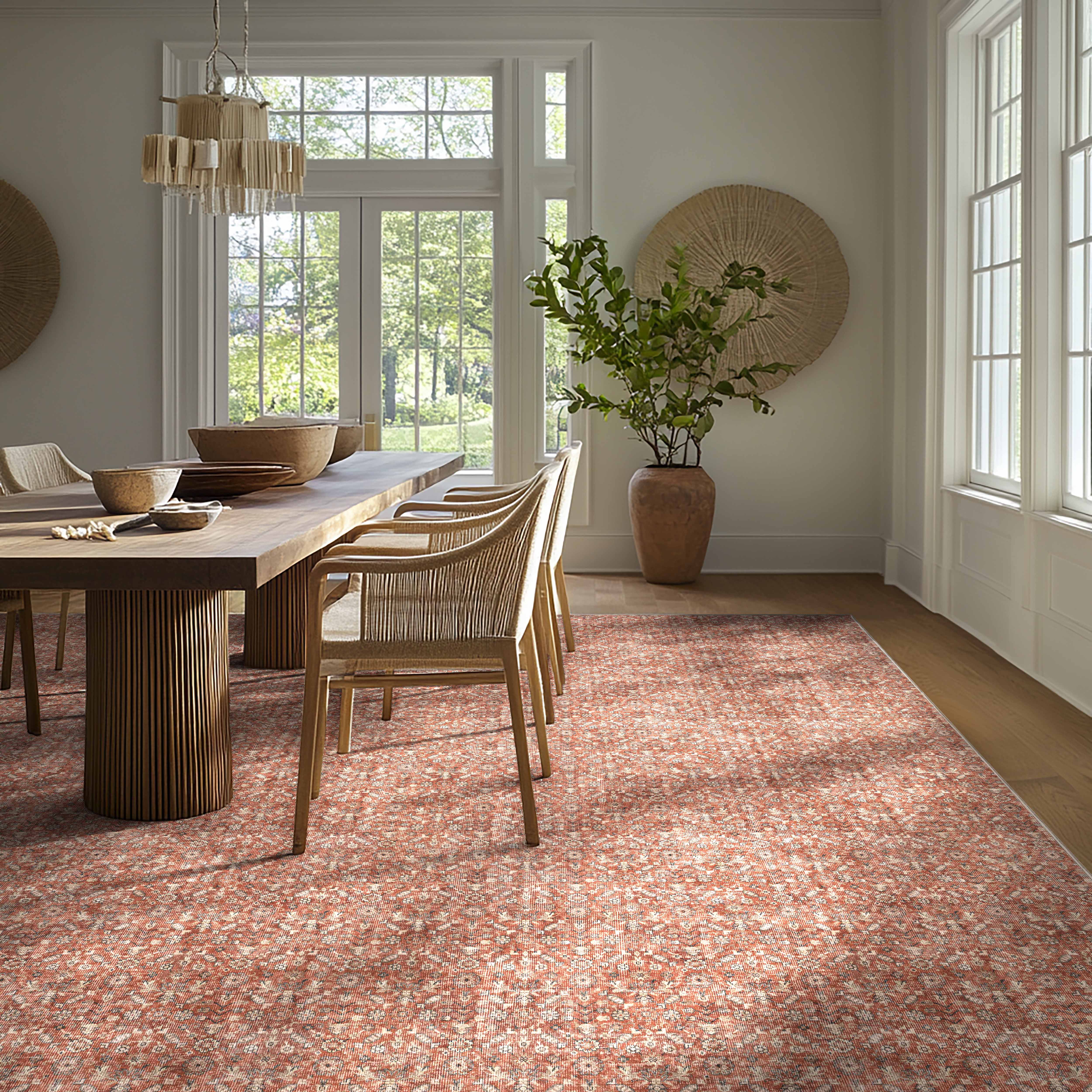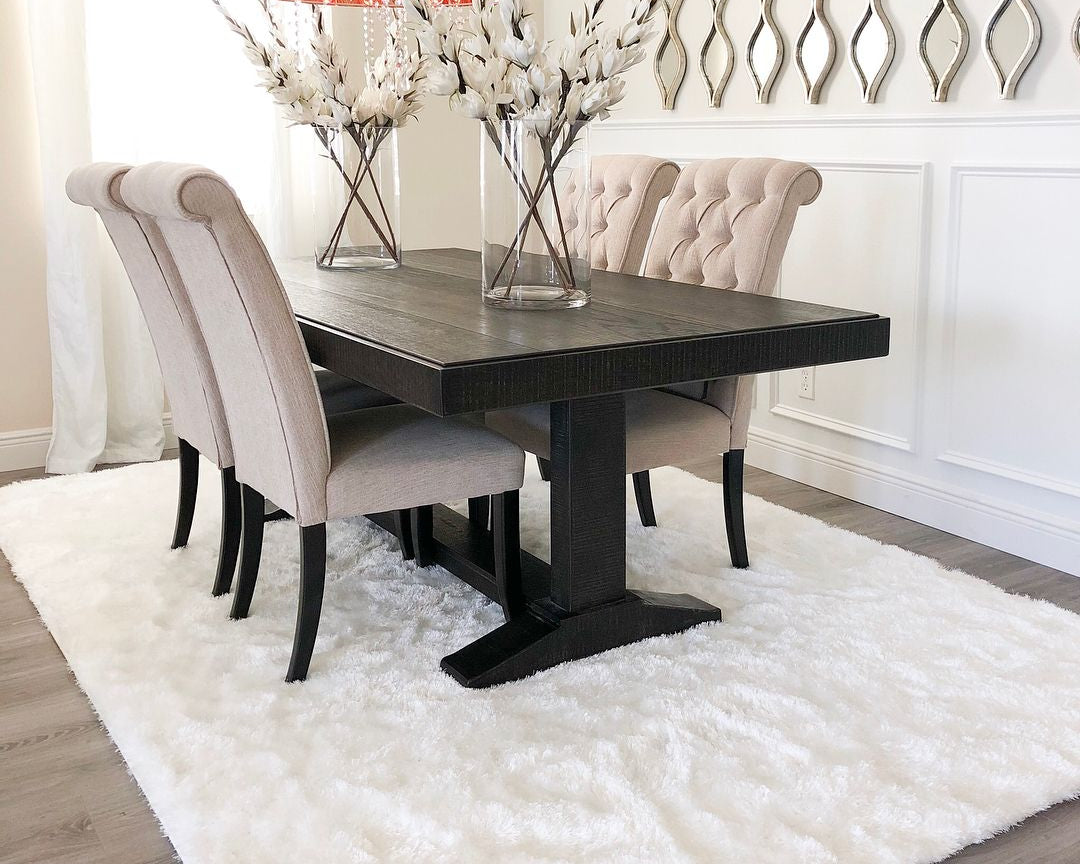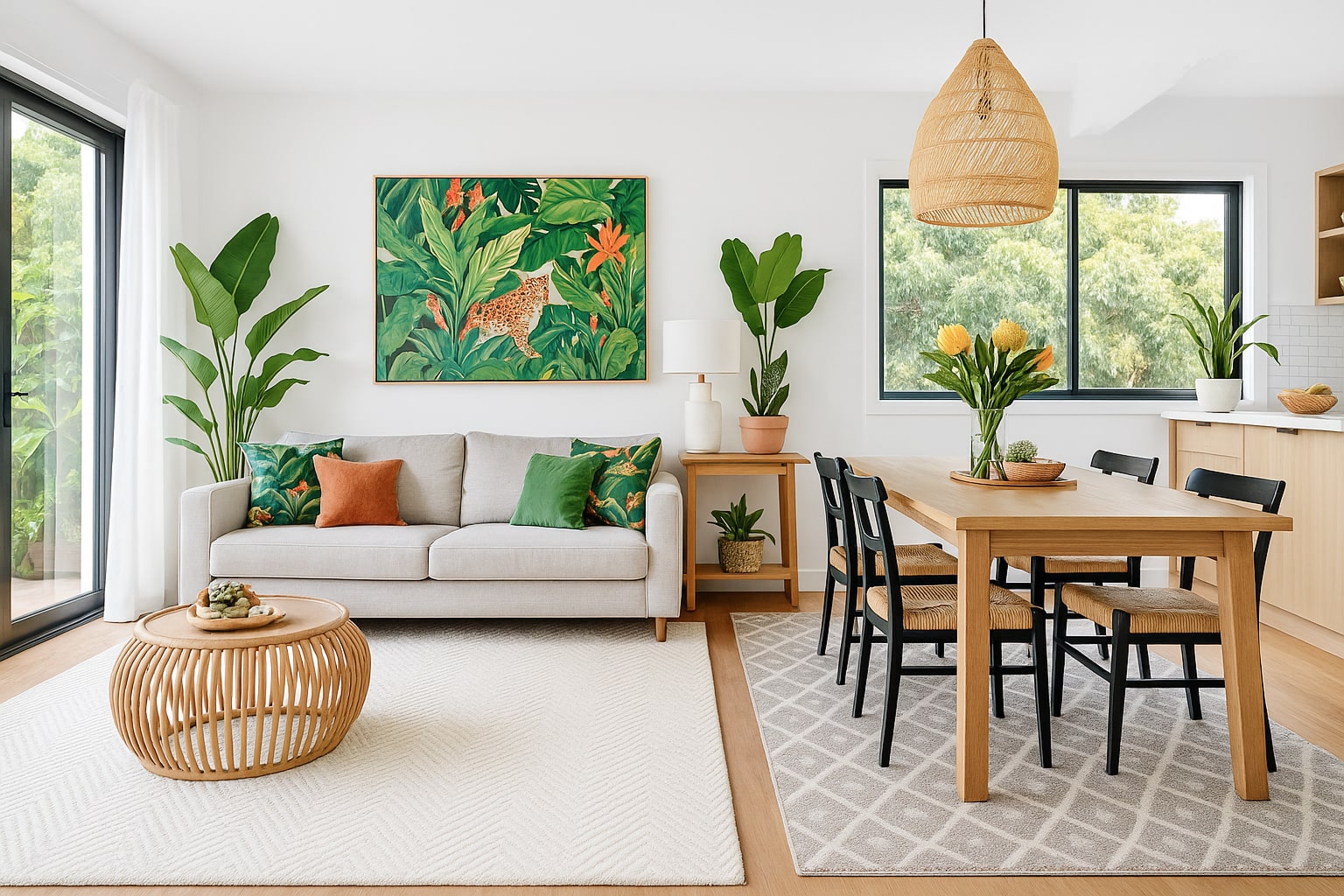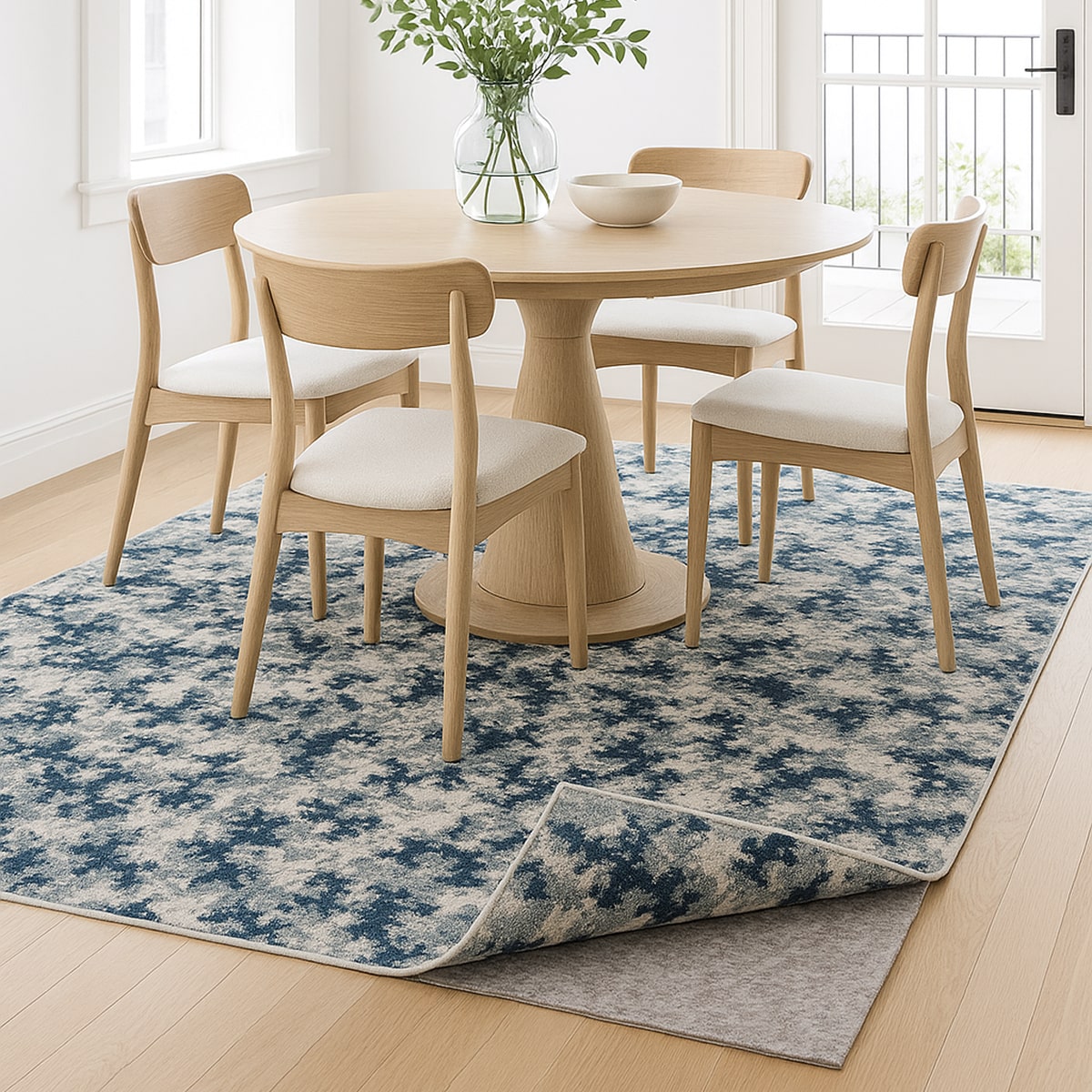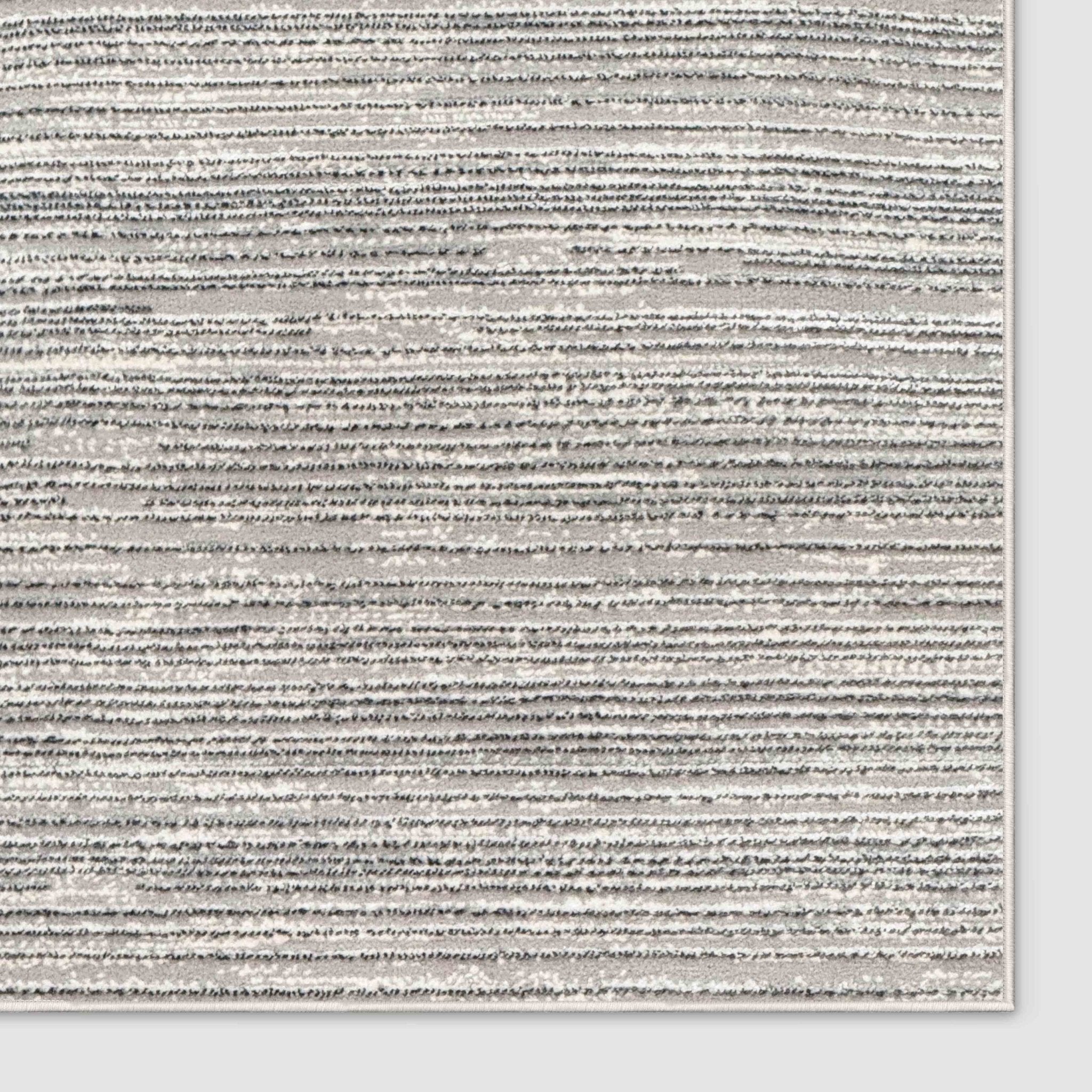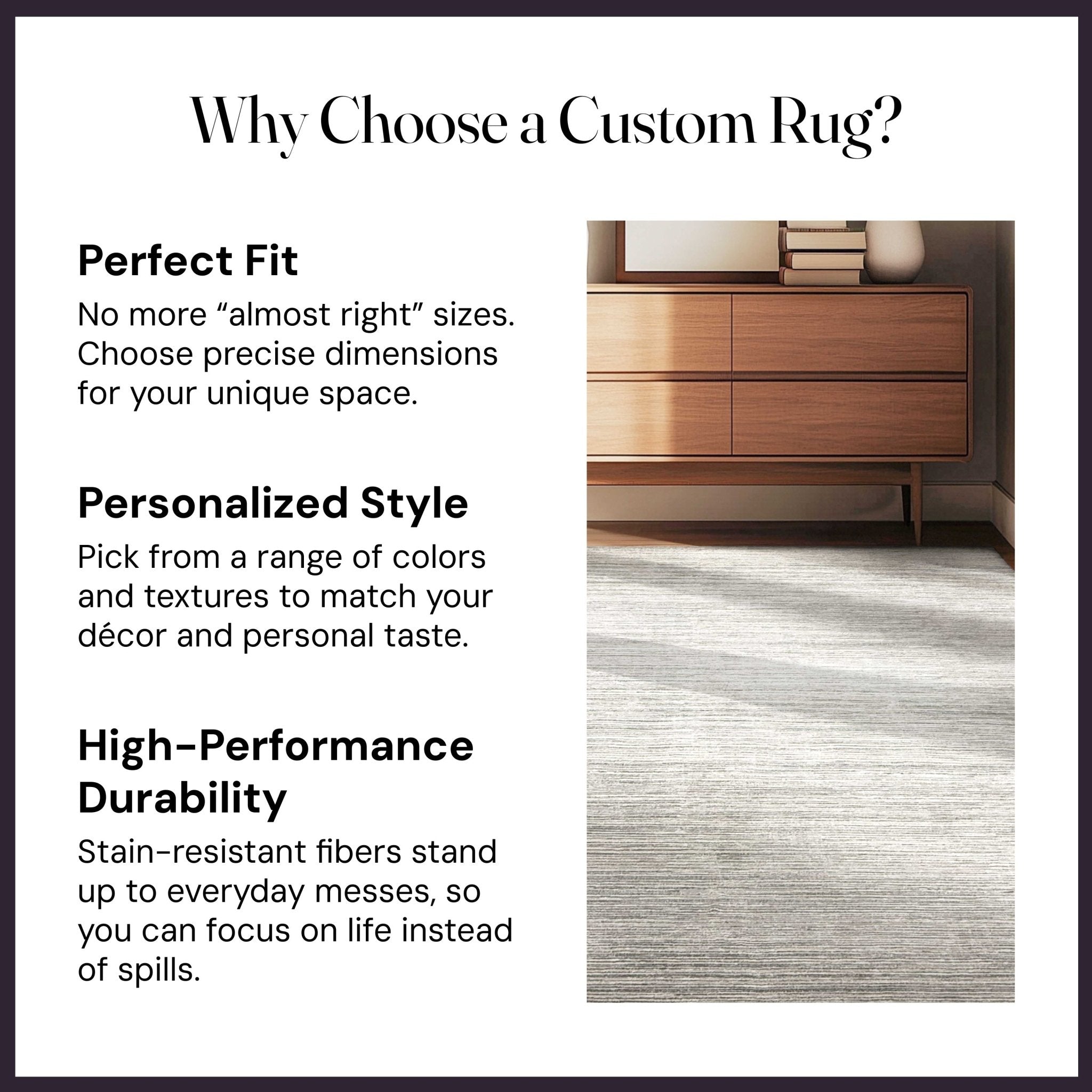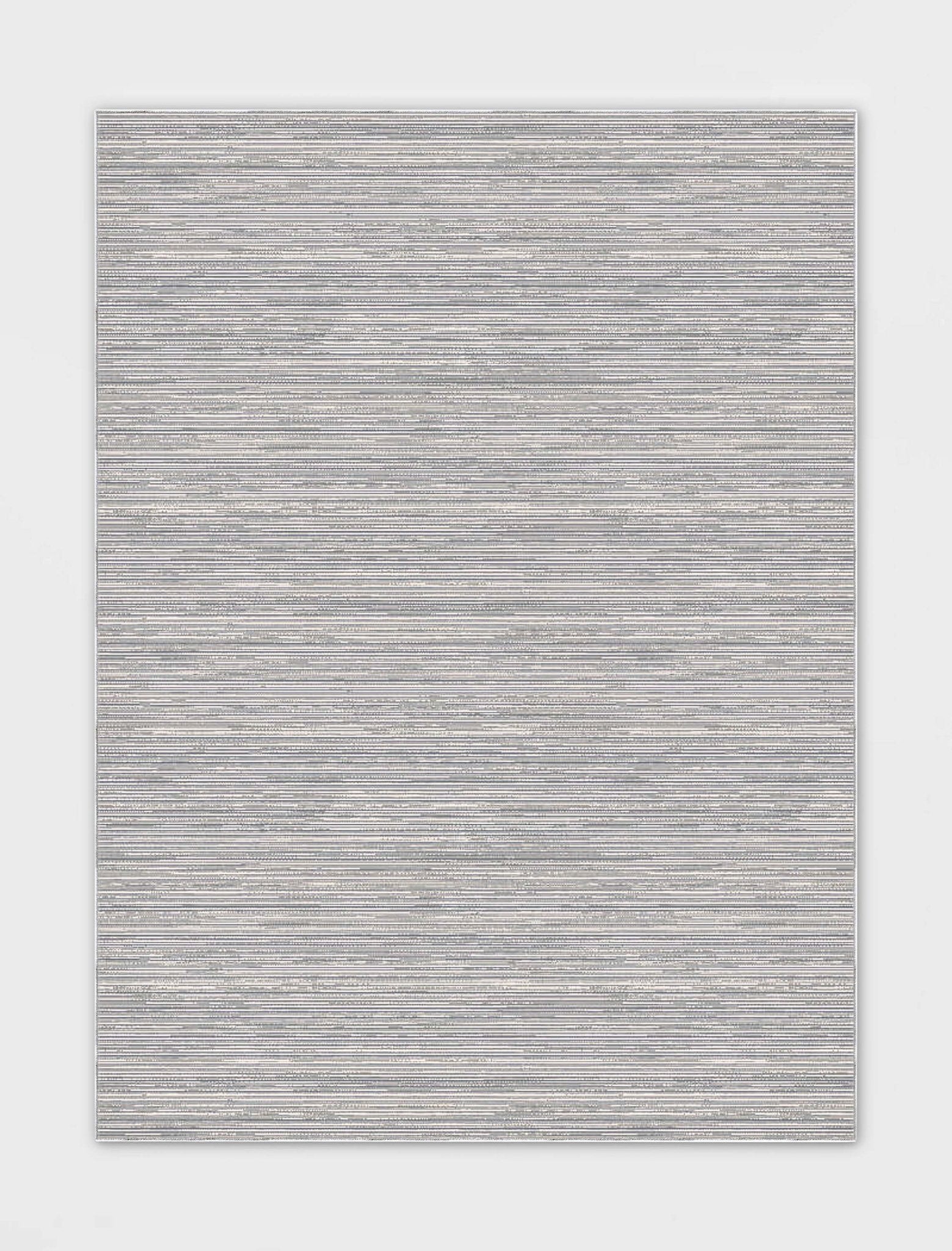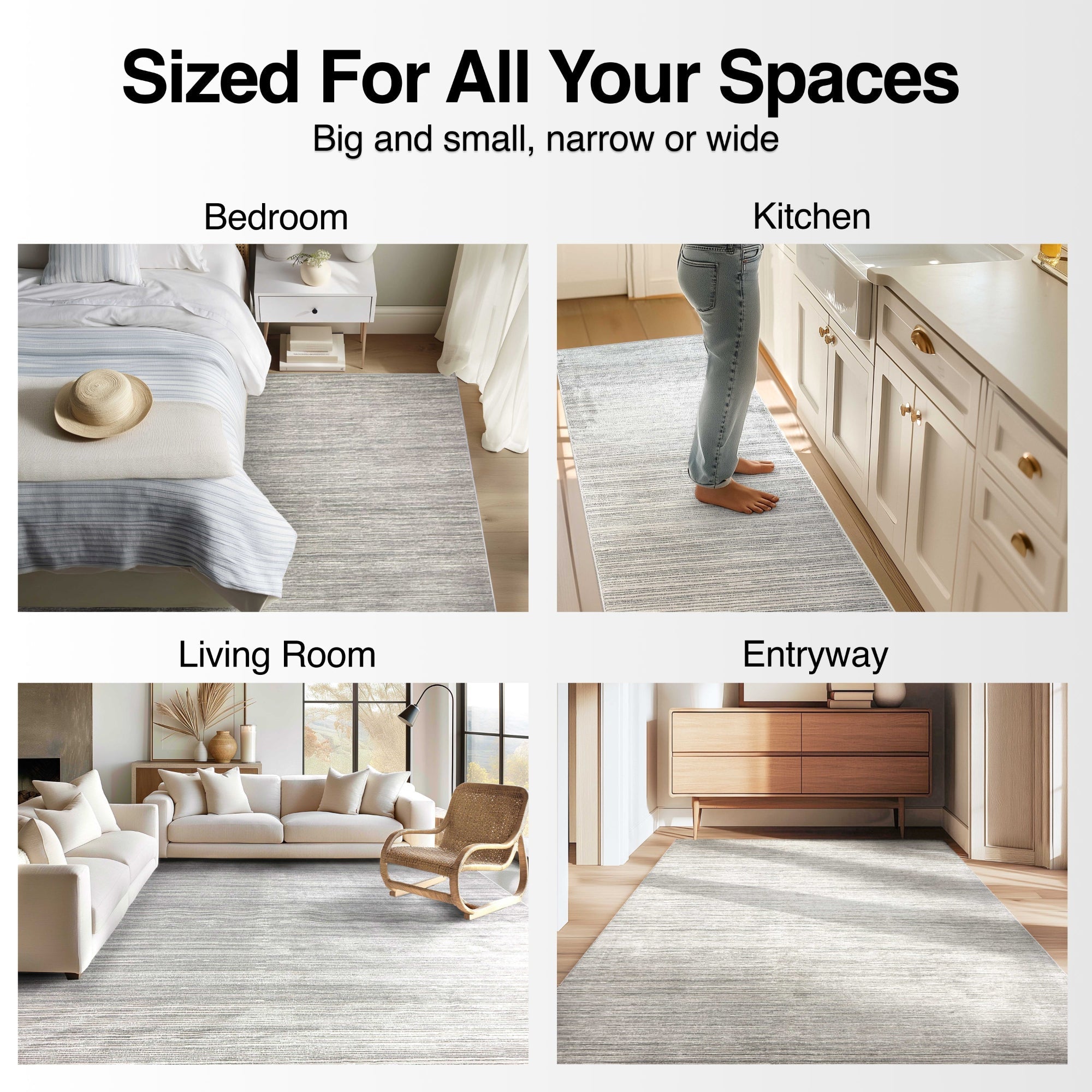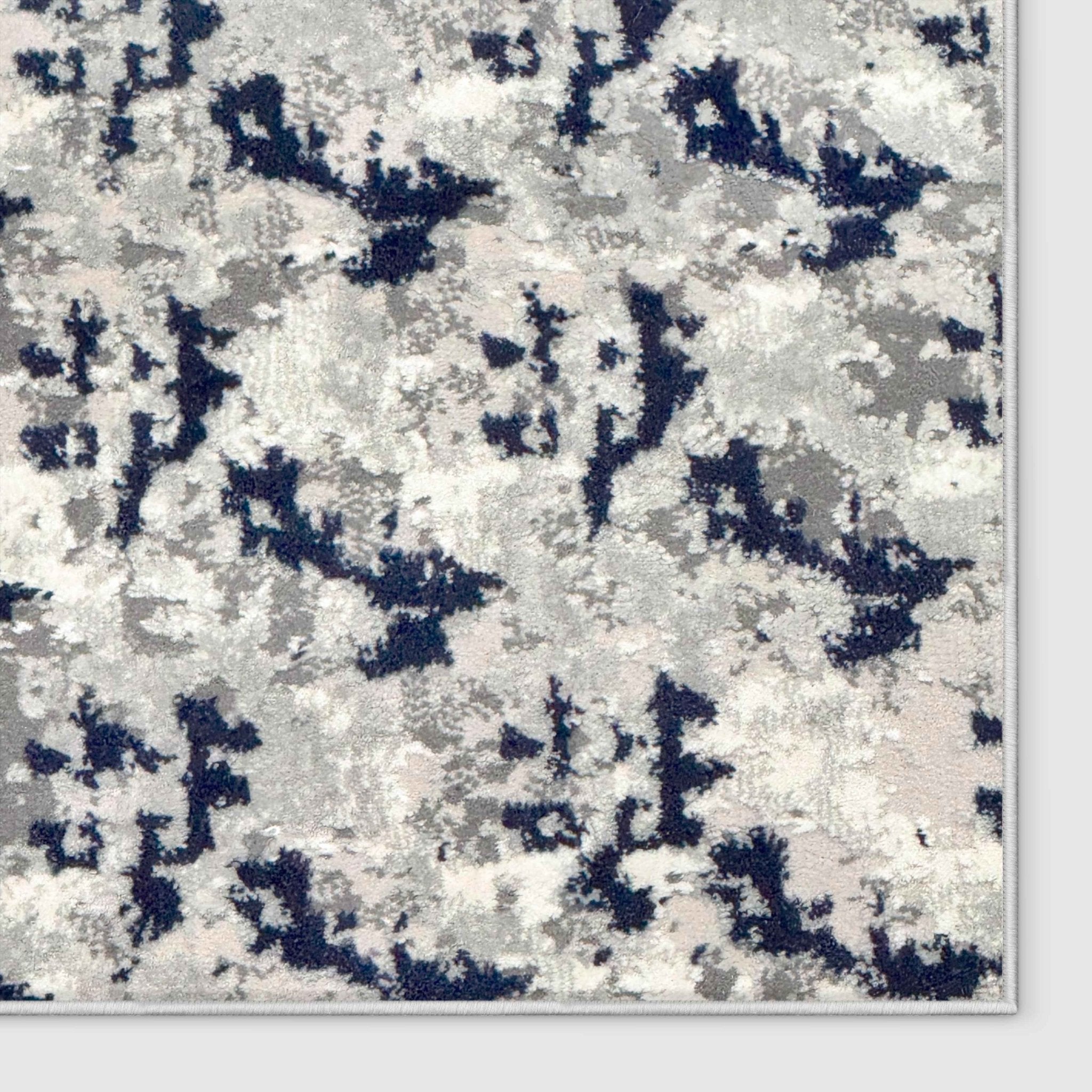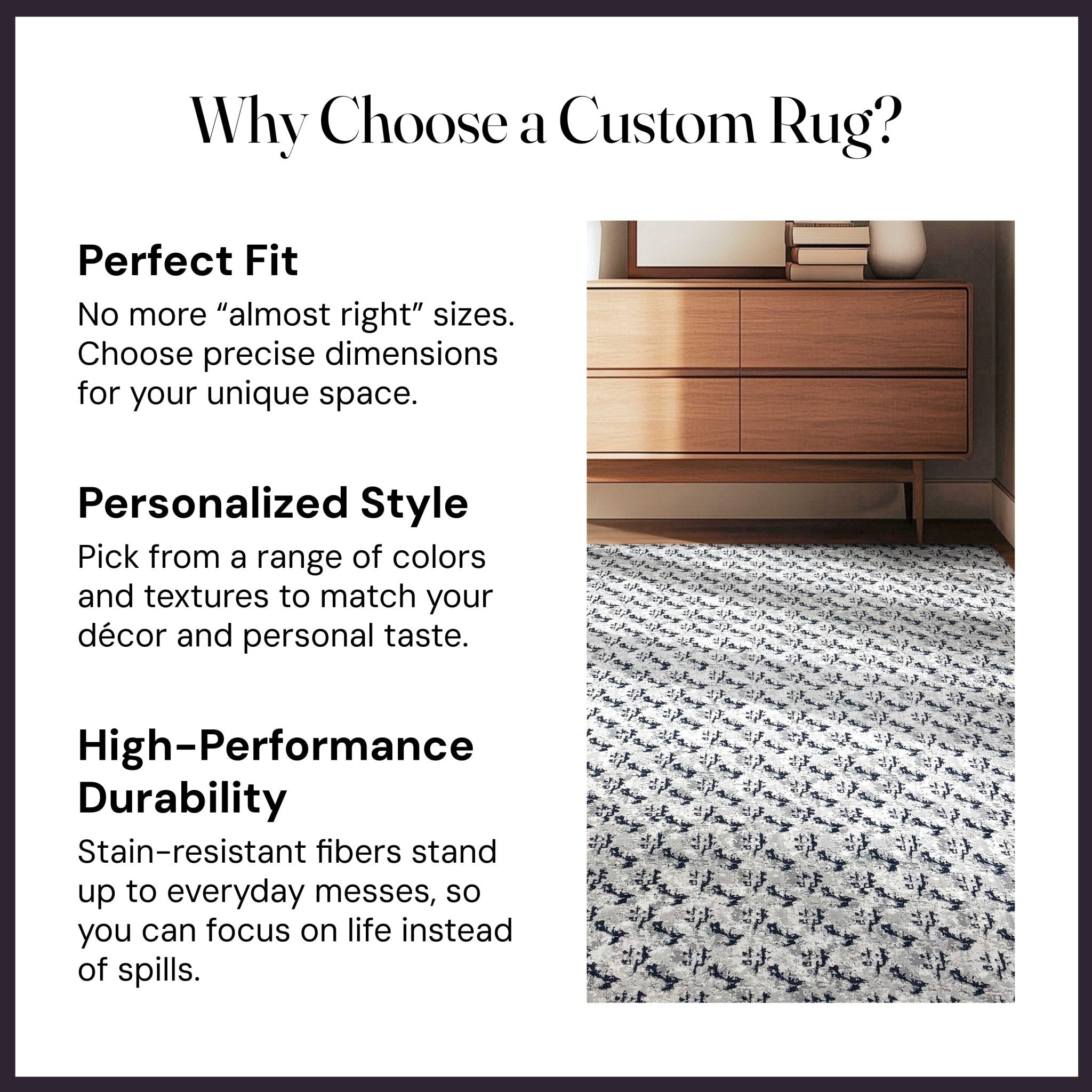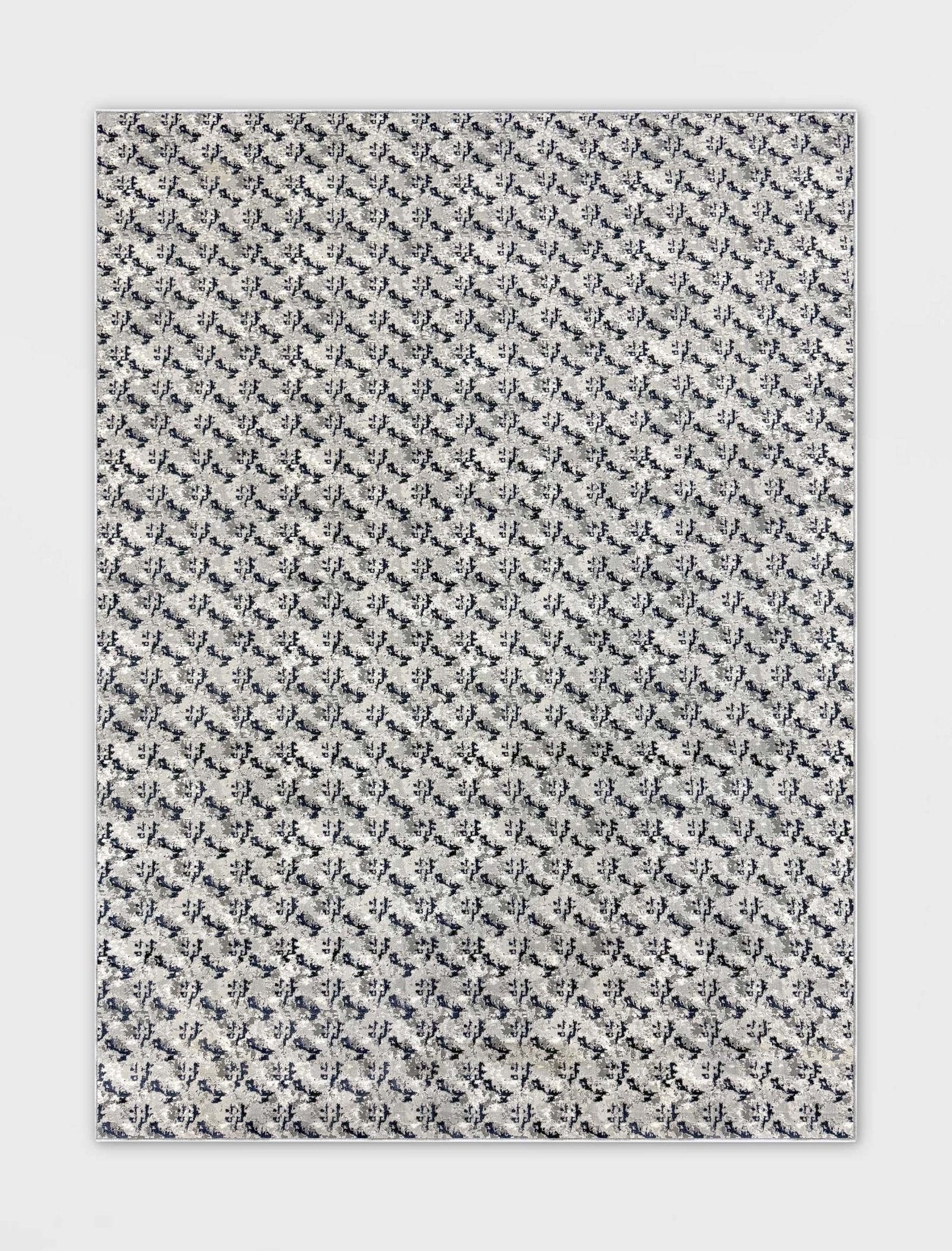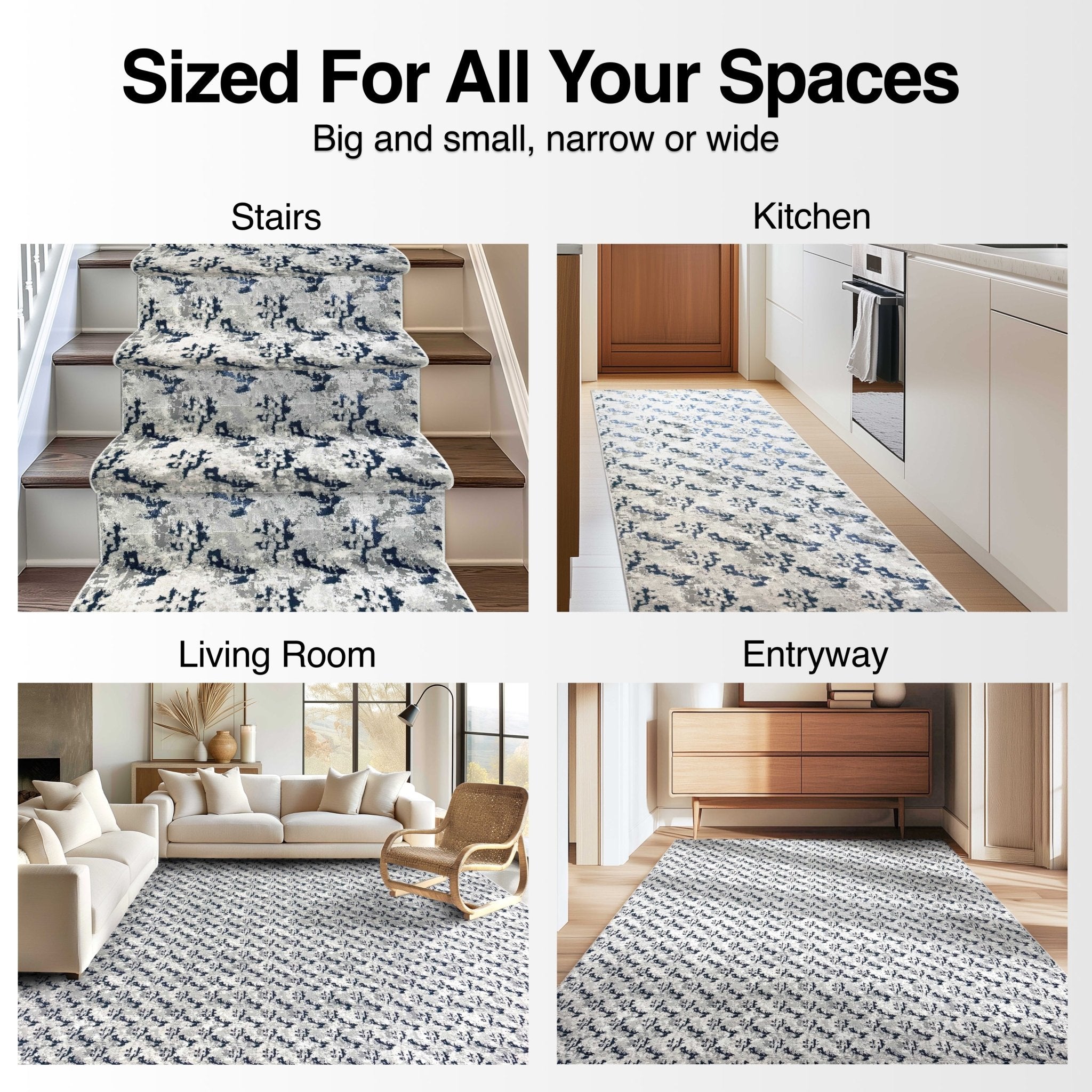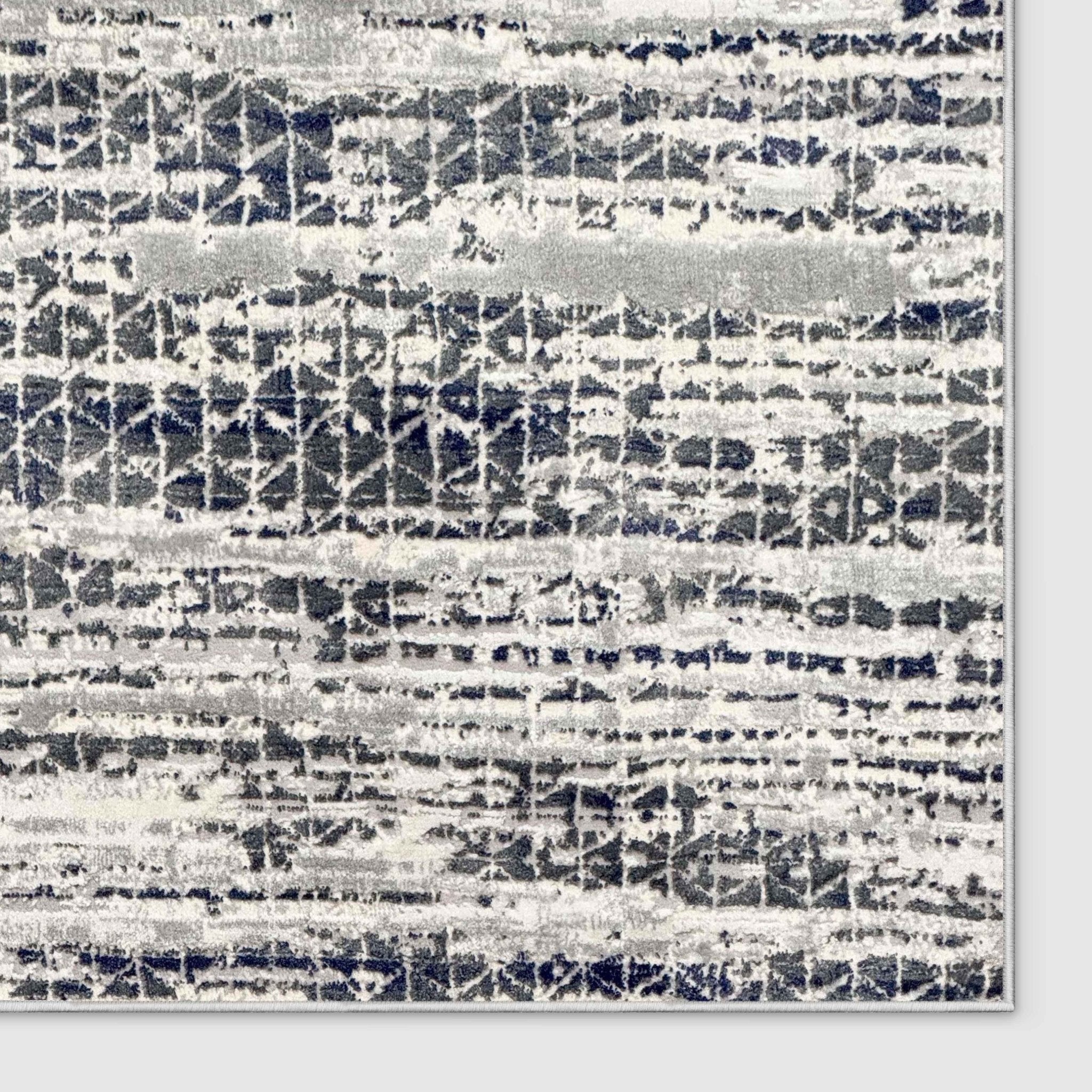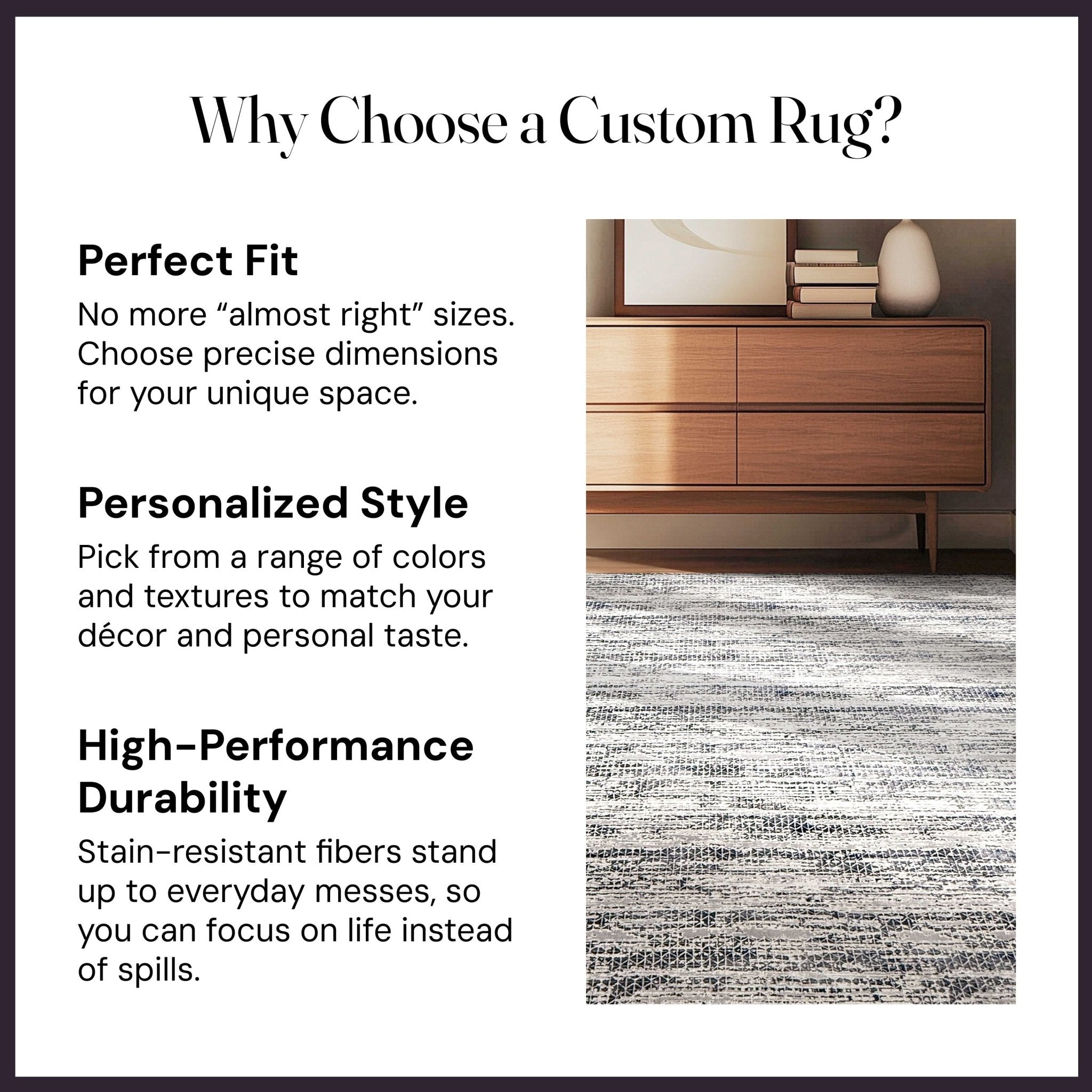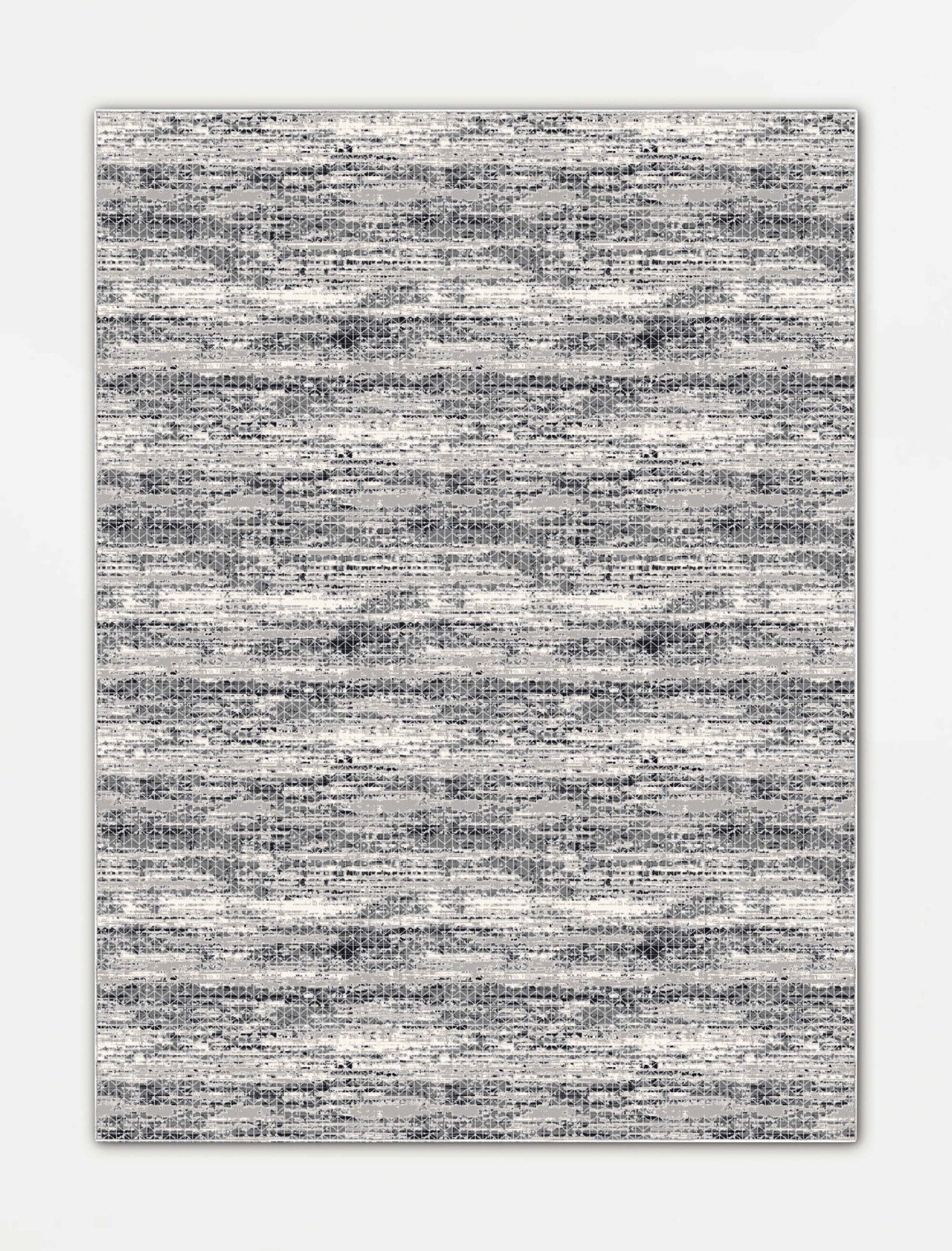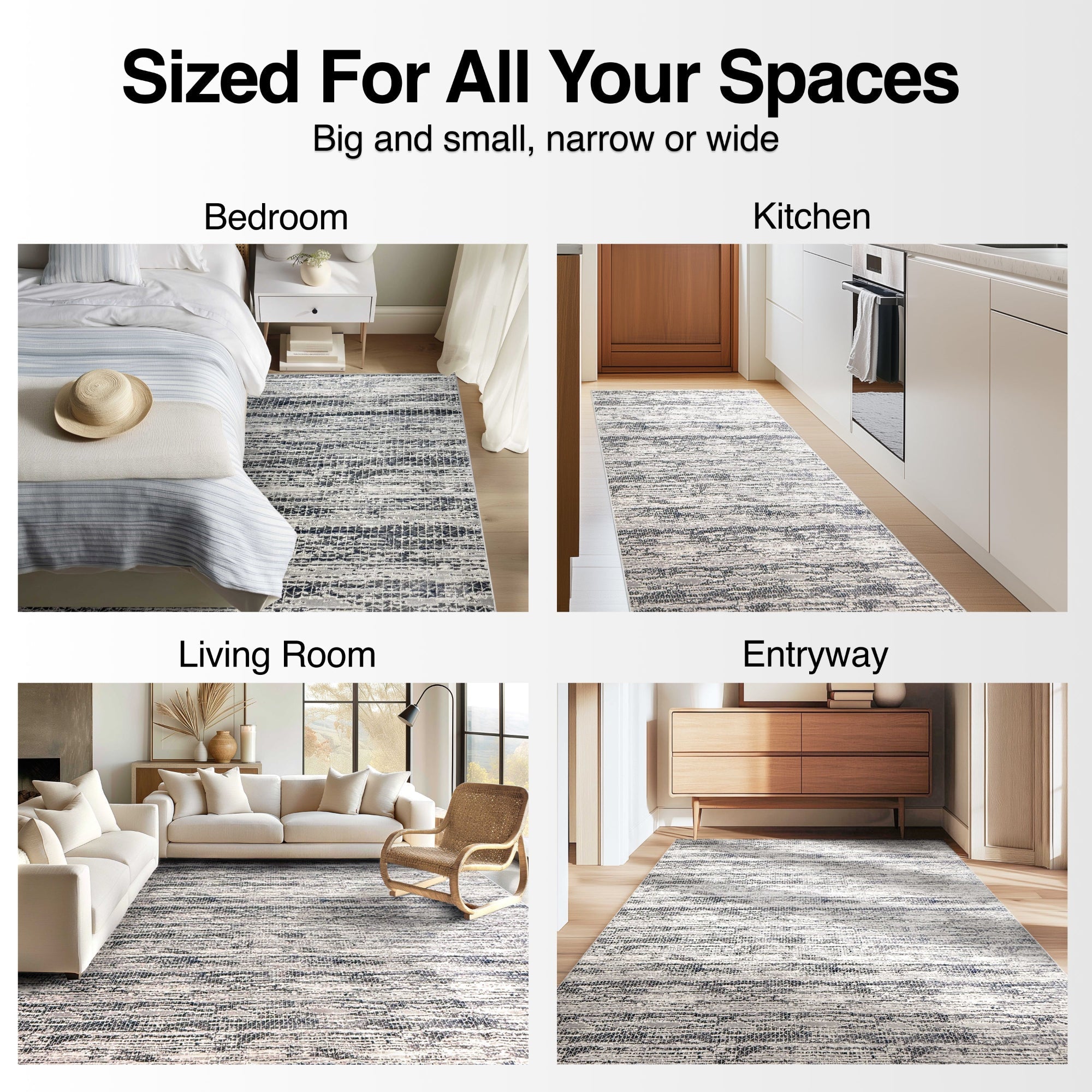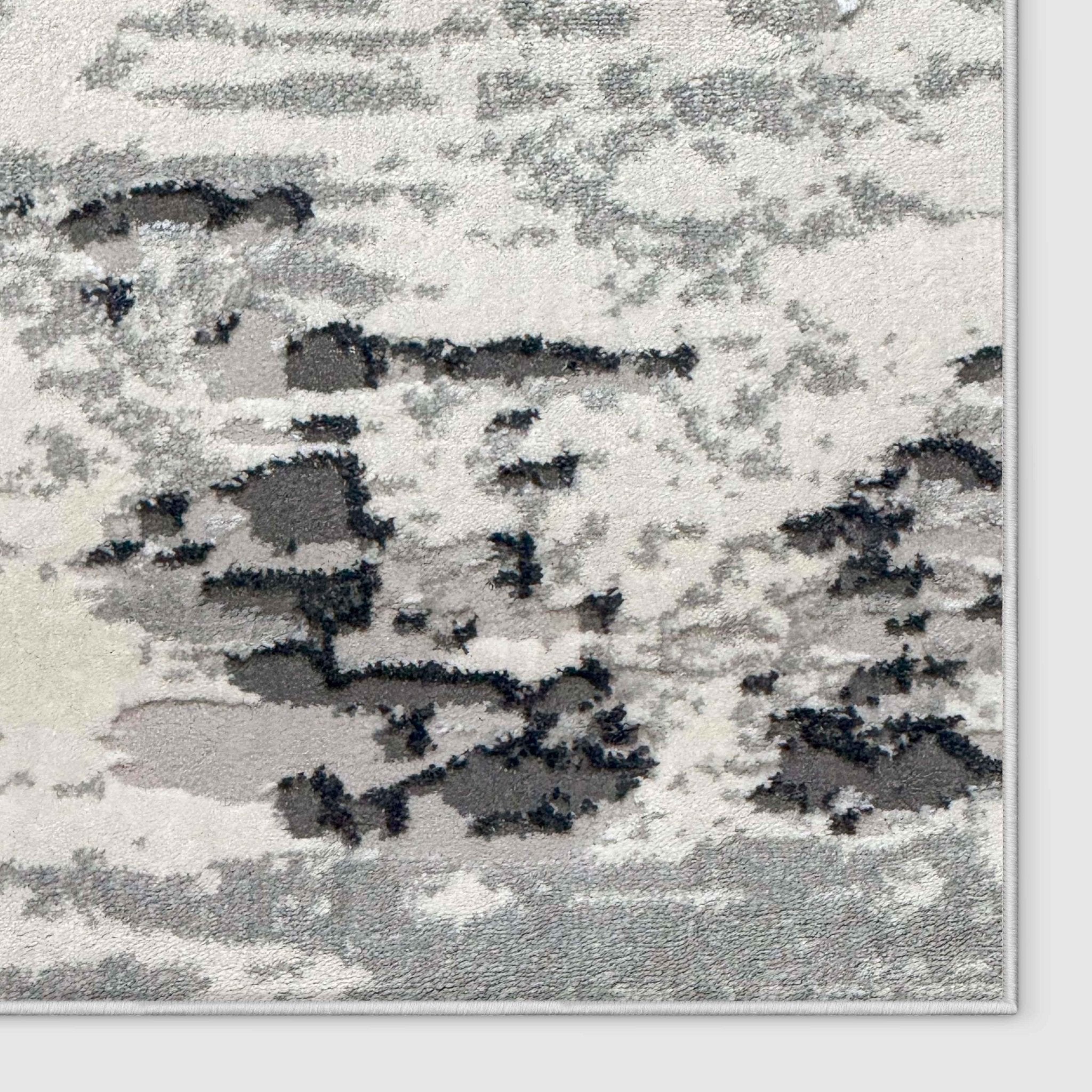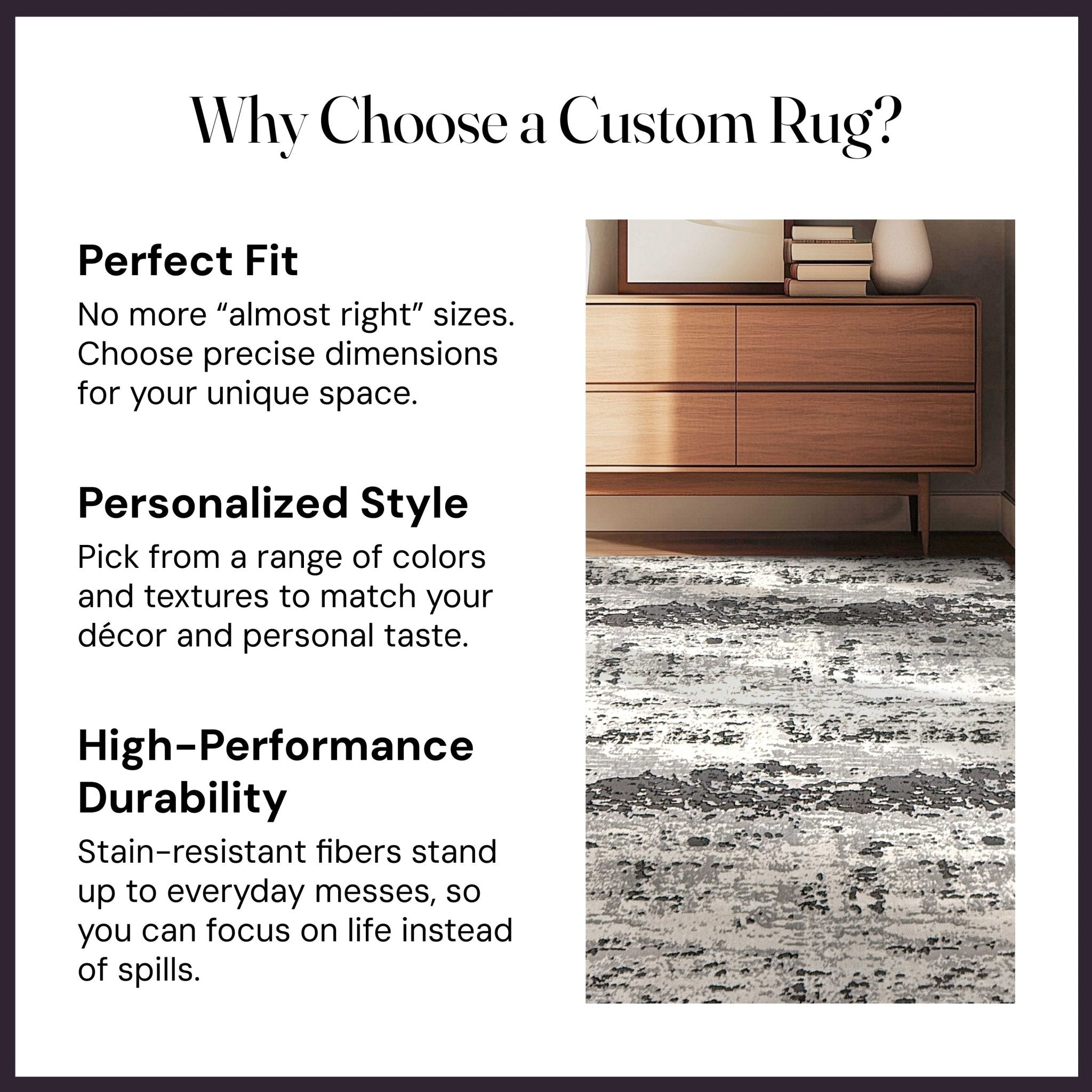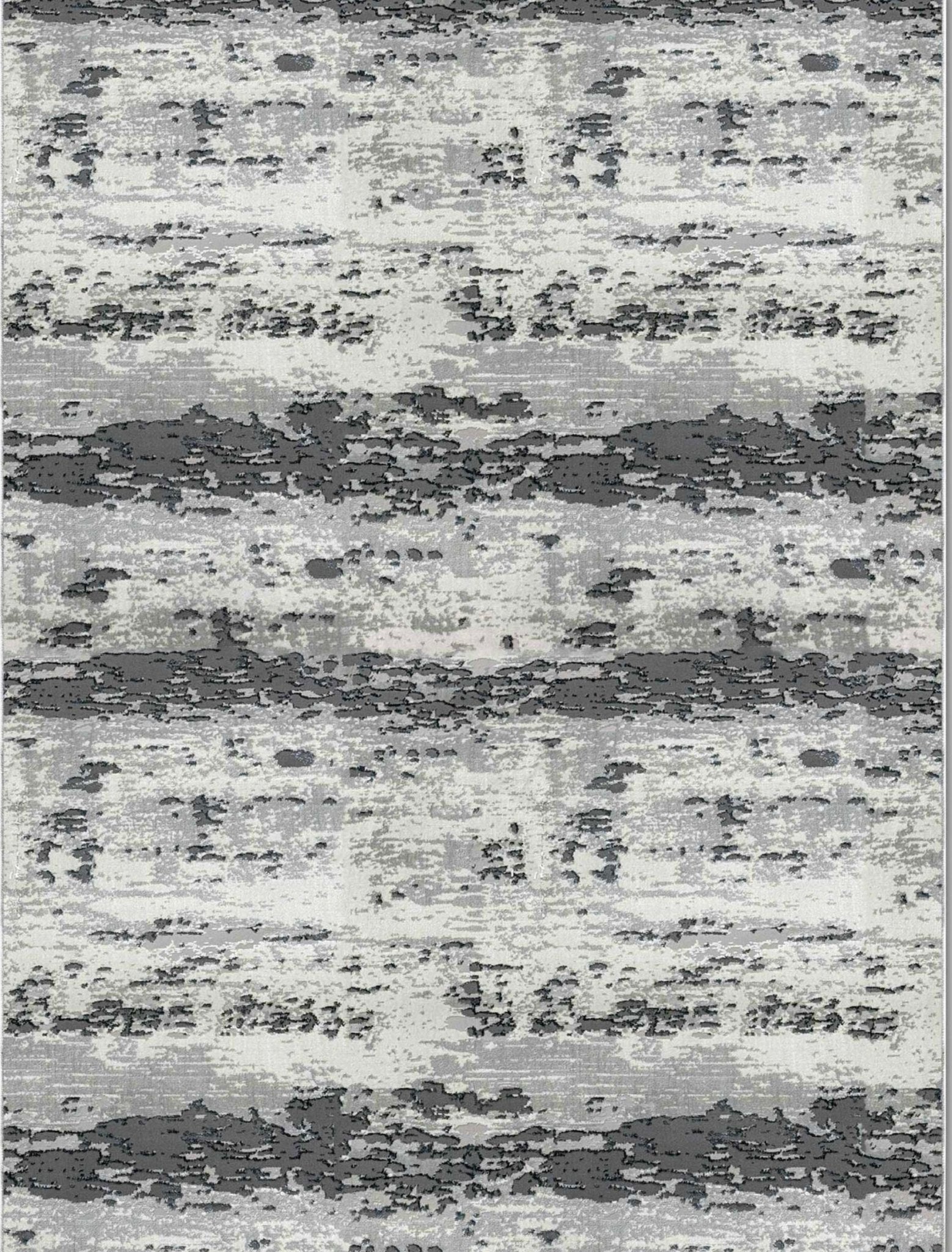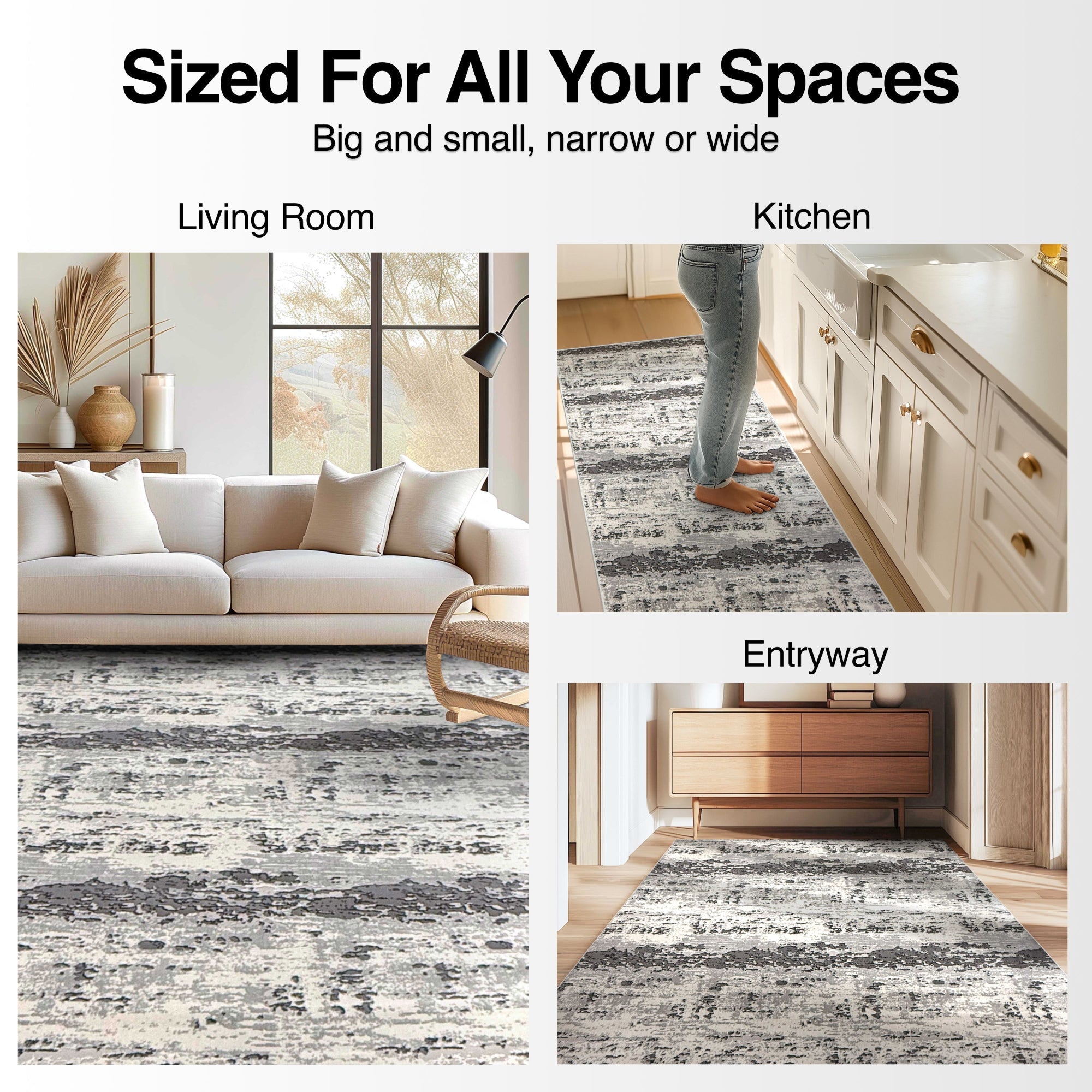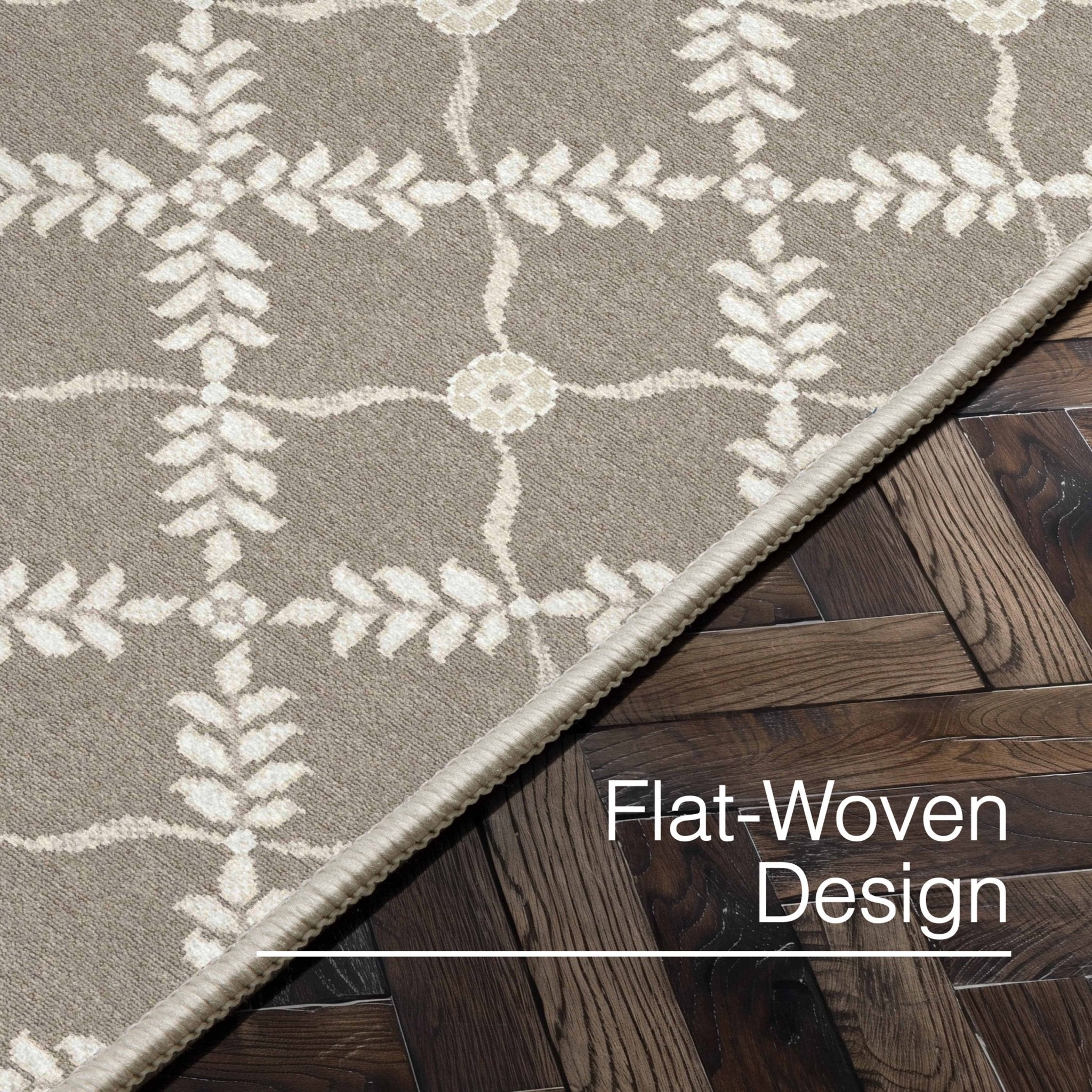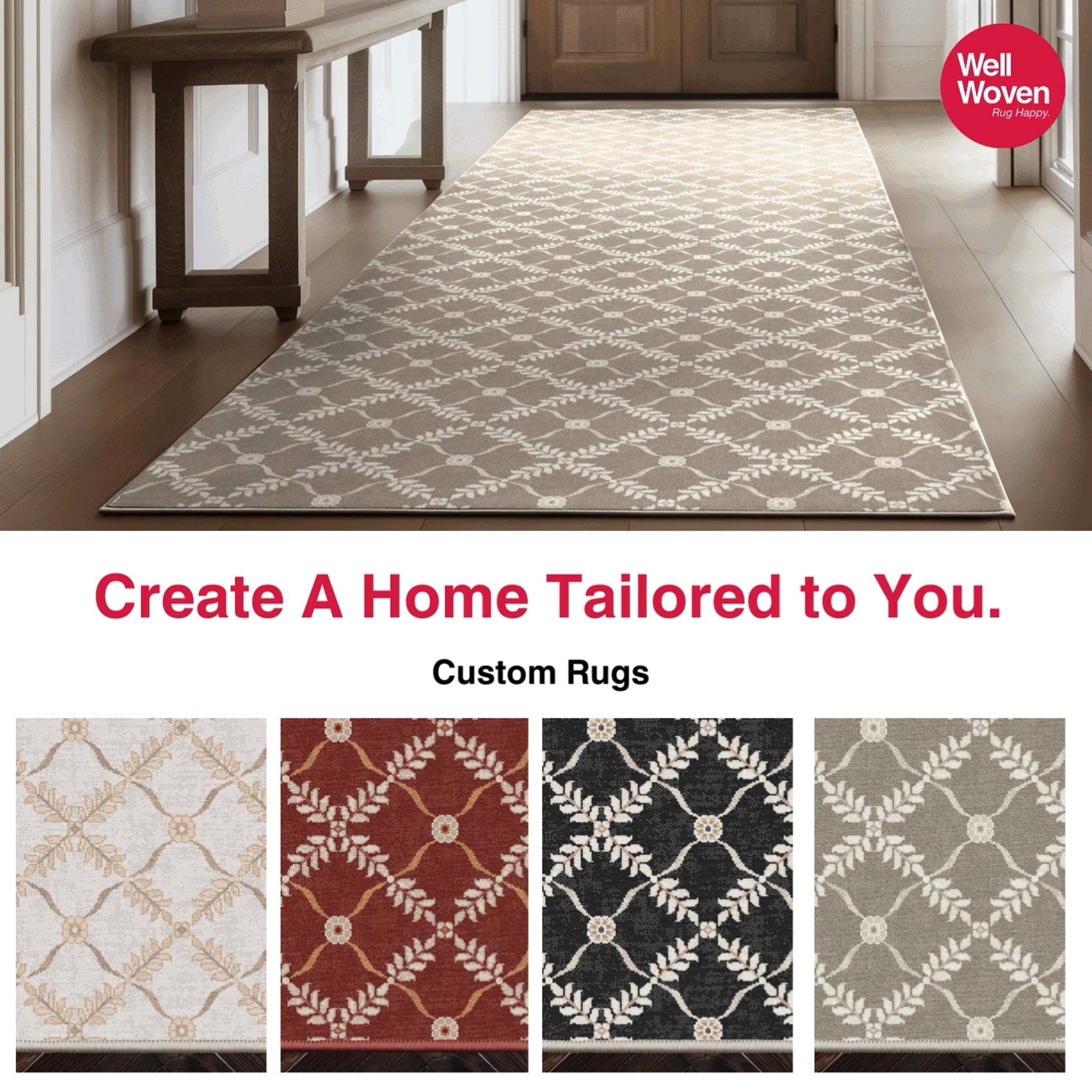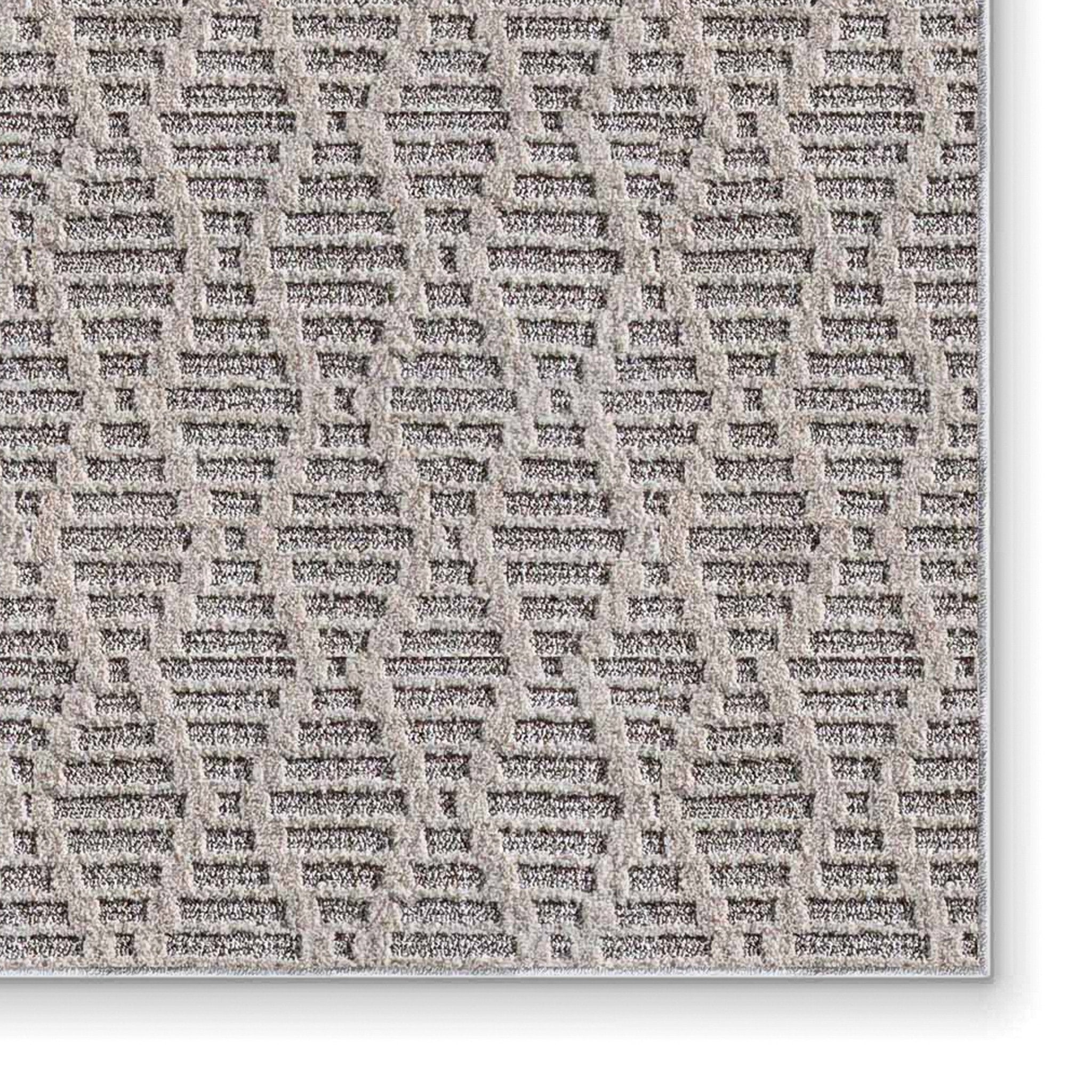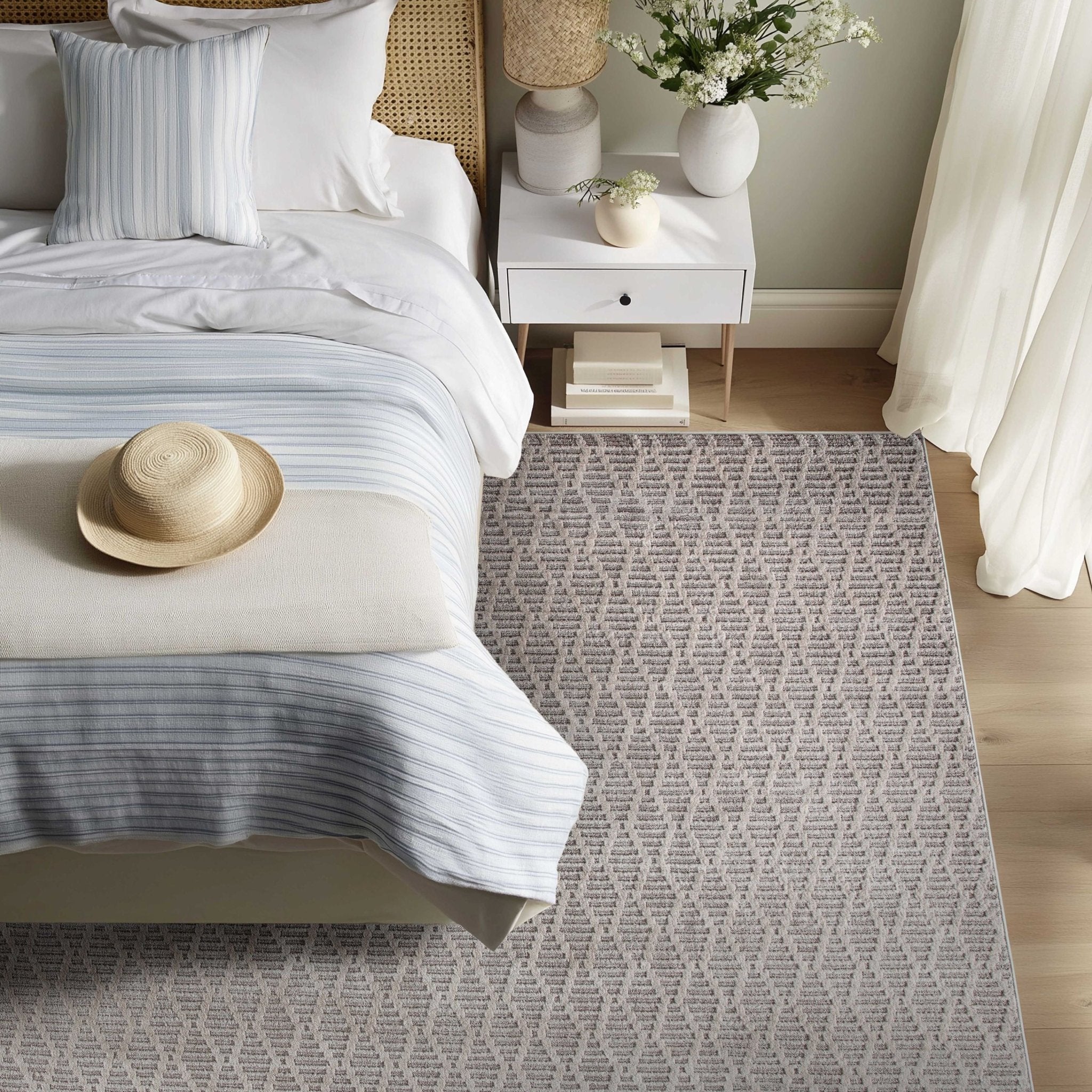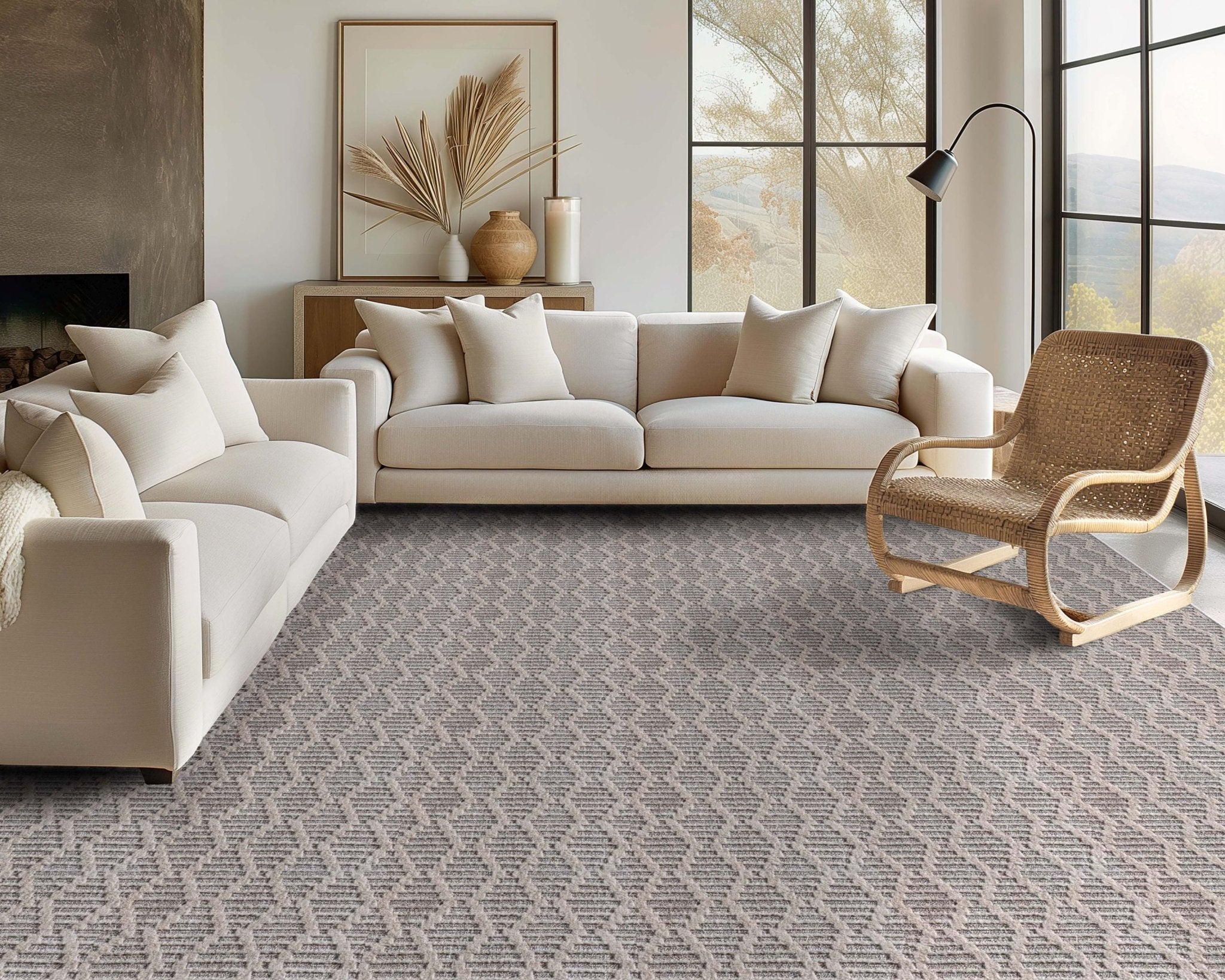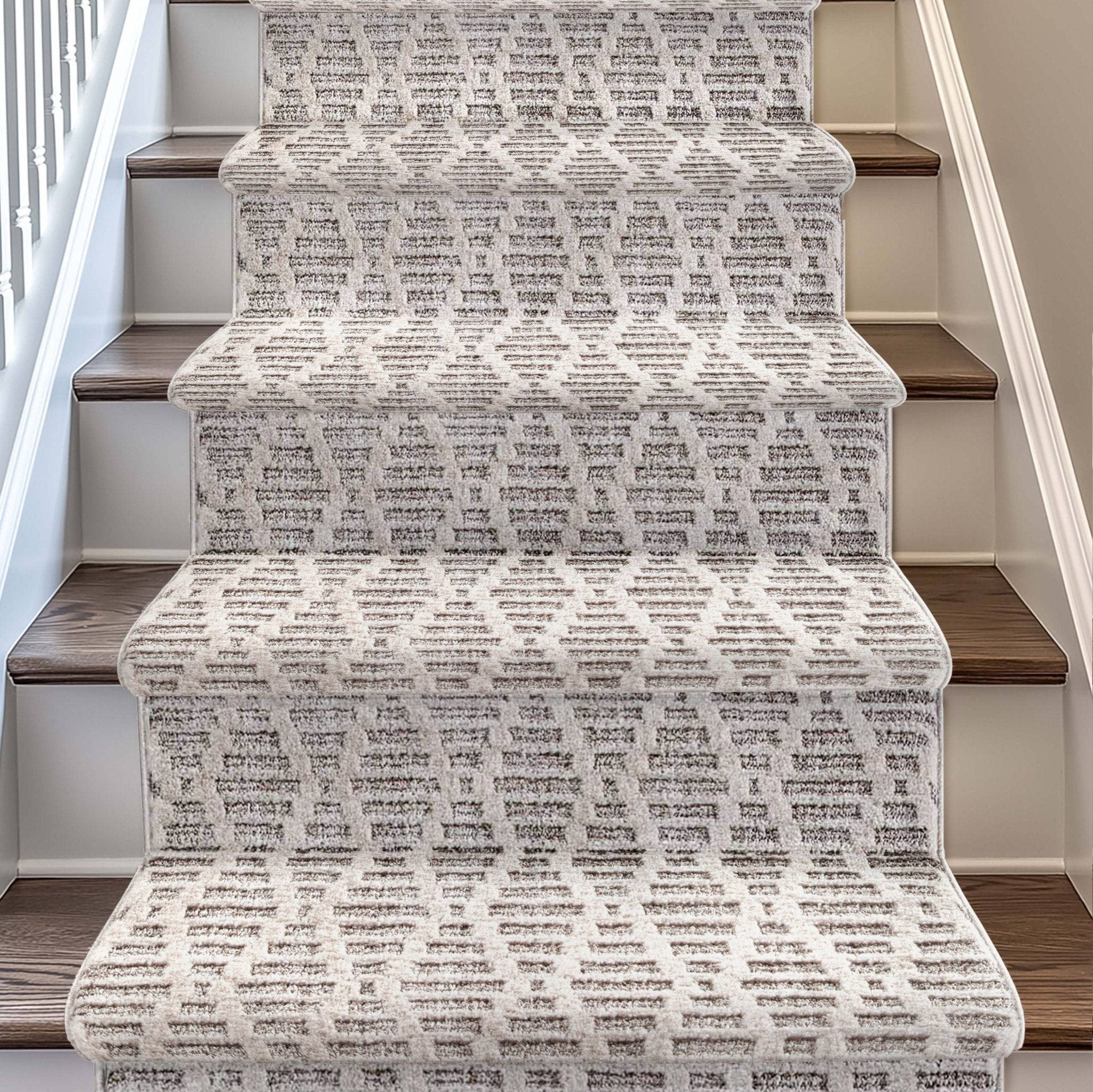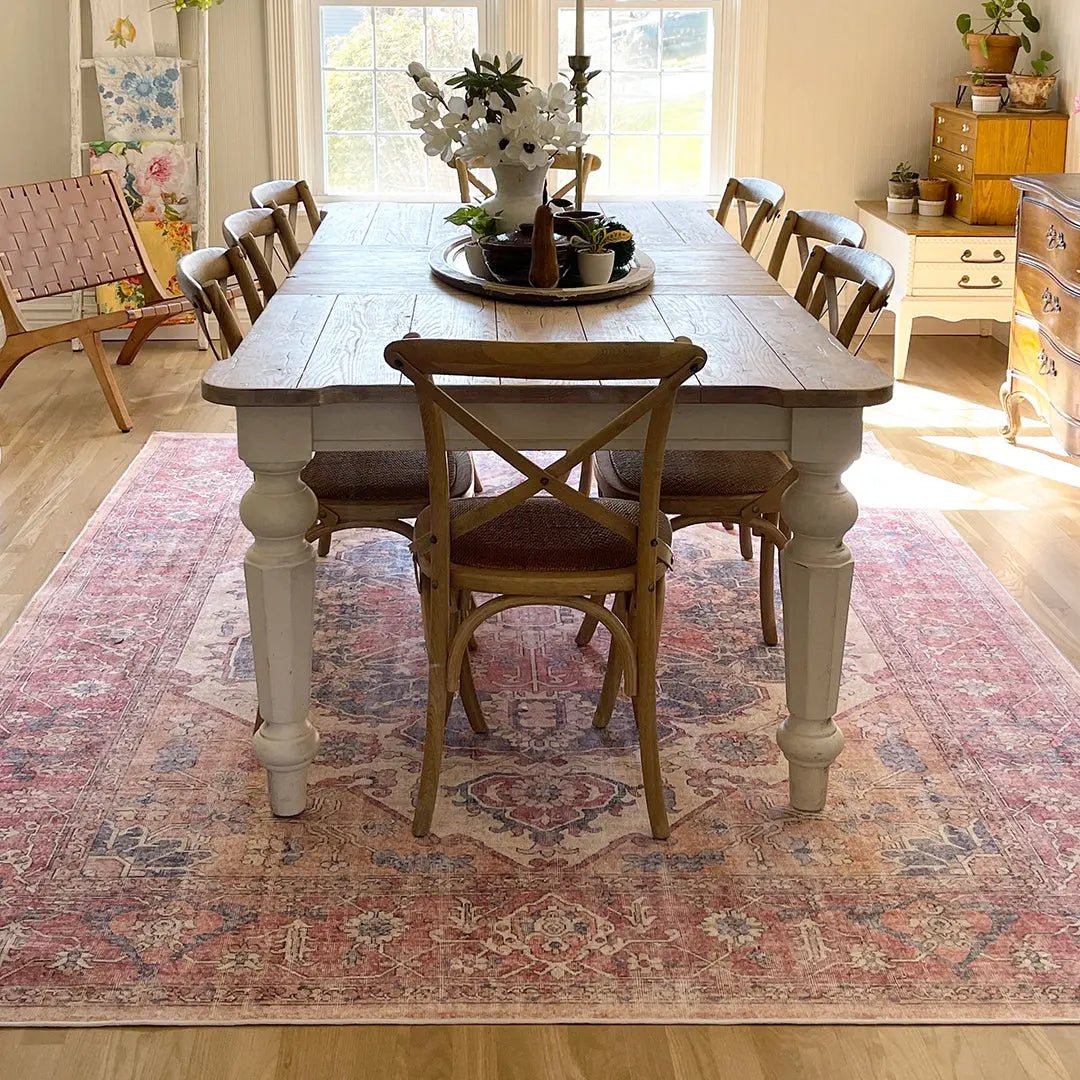
Choosing the Right Dining Room Rug Matters
A dining room rug does more than look pretty— it brings the whole space together while protecting your floors. A good dining room rug:
- Frames the table and defines the dining area.
- Prevents chair legs from catching on rug edges.
- Balances proportions so the rug, table, and room feel harmonious.
- Adds warmth, color, and texture to make mealtime more inviting.
Choosing the right rug for the dining room can transform your space, making it feel polished, comfortable, and uniquely yours.
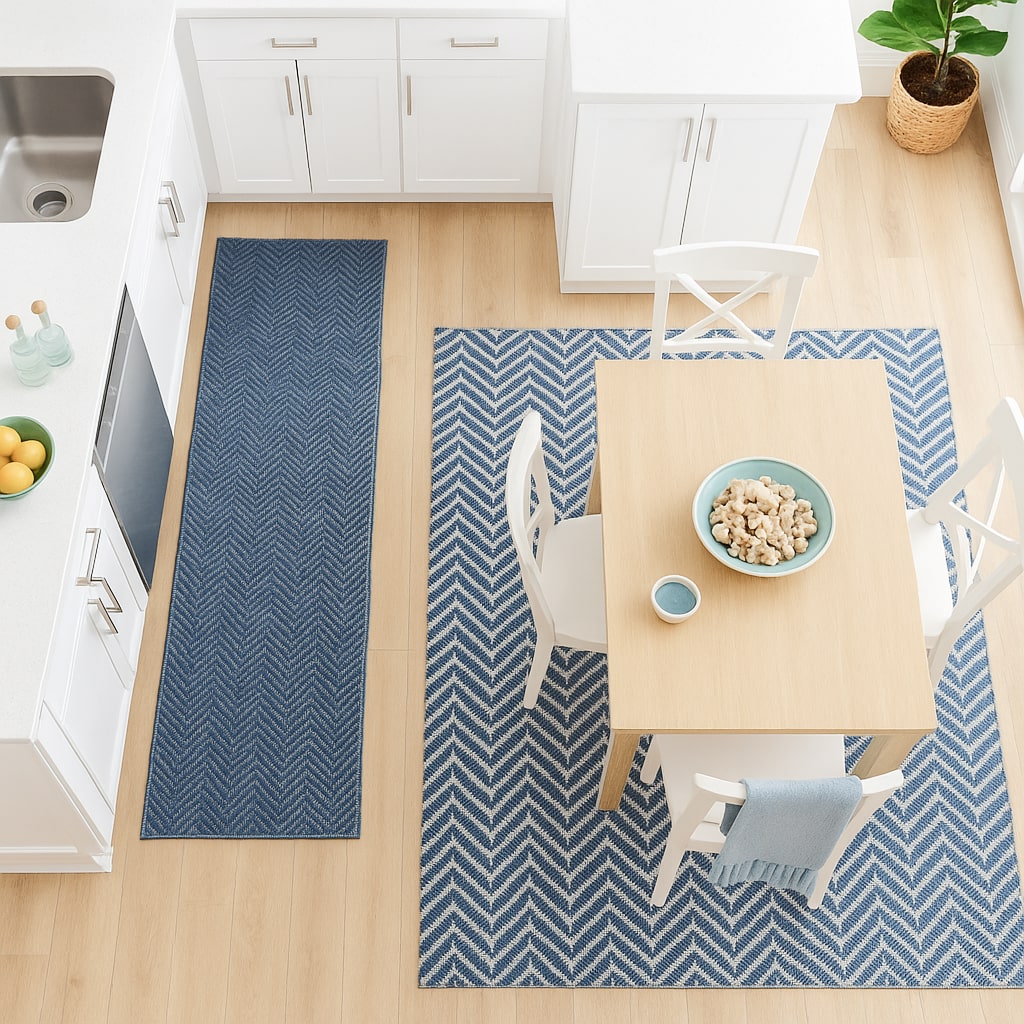
General Rules of Thumb for Dining Rug Sizes
When sizing a rug for a dining room:
- Choose a rug at least 24–30 inches larger than your table on all sides to allow chairs to slide back without catching.
- Measure your table length and width. Add 4–5 feet to both dimensions for the minimum rug size.
- For open-plan spaces, a rug helps visually zone the dining area.
The rug should be centered under the table and aligned with the table’s shape.
How to Place a Rug in Your Dining Room
The best dining room rug placement depends on your dining table and seating configuration. Consider these furniture and rug layouts:
A rug pad keeps your dining room rug in place and extends the life of your rug.
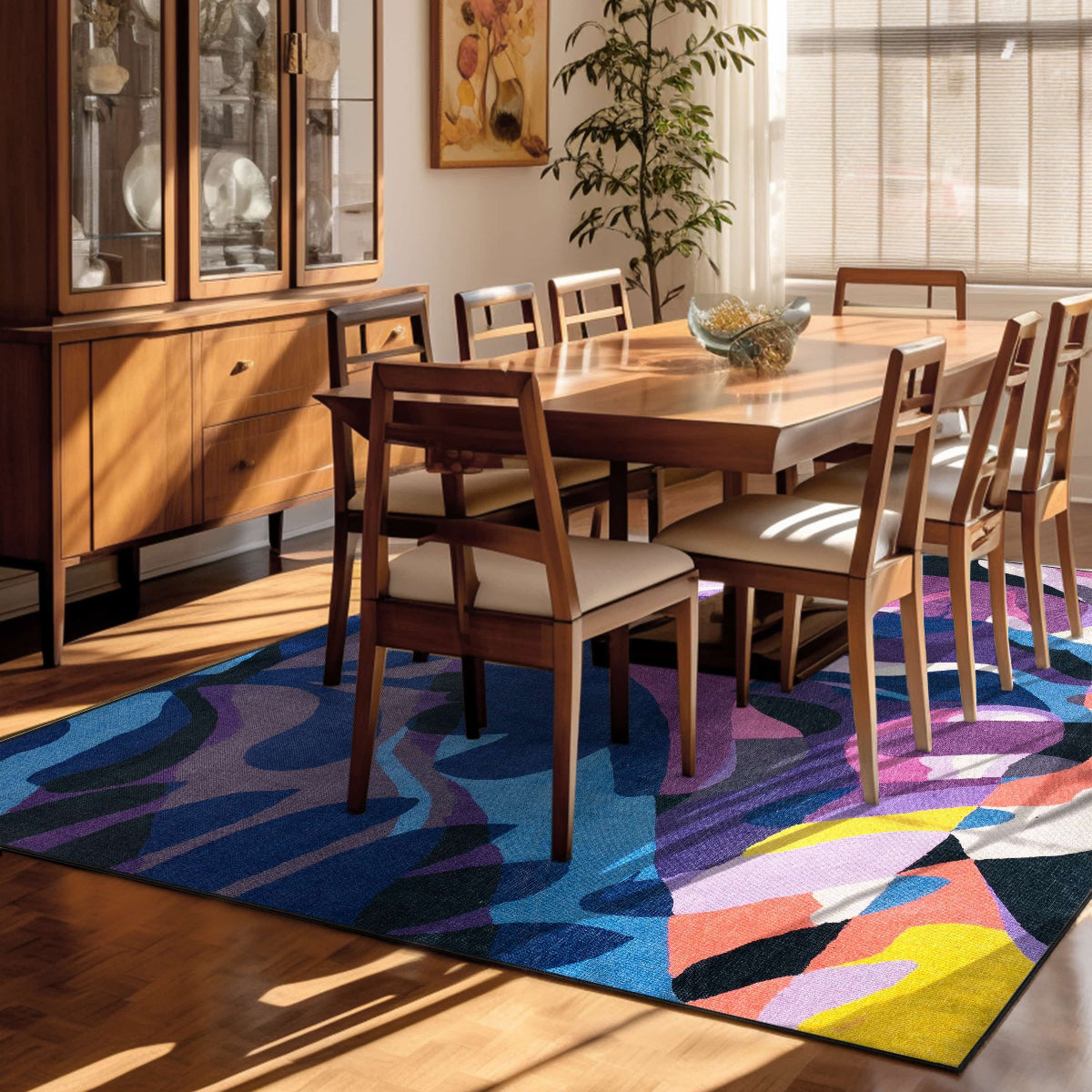
Which Rug Shape Works Best in a Dining Room?
- Rectangular: Most versatile and fits standard seating arrangements.
- Round: Adds softness and works well with curved furniture or in square dining areas.
- Square: Creates symmetry in balanced, even-shaped spaces.
Dining Room Rug Textures
The texture of your dining room rug shapes the atmosphere, affects comfort, and ties the space together. Here's what to consider:
Flat/Low-pile
Easy to clean and great for high-traffic spaces
Plush/High-Pile
Cozy and luxurious, ideal for comfort underfoot.
Natural Fibers
Wool for durability; jute for an organic, rustic feel.
Synthetic Fibers
Stain-resistant; easy to maintain; cost-friendly
Exploring Colors and Patterns
The right dining room rug color and pattern can completely transform your space. Soft tones like cream, taupe, and light blue create a calm, welcoming backdrop, while deeper shades such as charcoal, burgundy, or navy blue bring drama and sophistication. For pattern, striped dining room rugs can elongate the room, plaid and checkered rugs add timeless style, and abstract rugs introduce a modern, artistic touch. Each choice sets a distinct mood while keeping your dining area comfortable and inviting.
Popular Dining Room Rugs at Well Woven
FAQs About Dining Room Rugs
Can you put a rug over carpet in a dining room?
Yes, layering a rug over carpet can add style, define the dining area, and protect the underlying carpet from spills. Choose a flatweave or low-pile rugs for easier chair movement, and use a thin, non-slip rug pad to keep it stable.
What’s the best rug size for an extendable dining table?
For extendable tables, size the rug based on the fully extended length (not the everyday size), so it accommodates chairs even during large gatherings. This prevents guests from catching chair legs on the rug edge.
How do I stop my dining room rug from bunching under chairs?
A high-quality rug pad and a low-pile or flatweave rug can reduce bunching. Avoid overly thick or high-pile rugs, which can catch on chair legs.
Can you use a jute rug in the dining room?
Yes, but choose a tightly woven jute rug rather than a chunky weave. This prevents crumbs from getting trapped and makes cleaning easier. Pair it with a rug pad for comfort and stability.
Is it okay for a dining room rug to be smaller than the table and chairs?
It’s possible, but not ideal. A rug that doesn’t extend far enough can cause chairs to wobble or catch on the edge. For safety and style, extend the rug at least 24 inches beyond all sides of the table.
How do you protect a dining room rug from spills?
Consider a performance fiber rug or apply a stain-resistant treatment. Keep a clean cloth or paper towels nearby to blot spills immediately, and avoid rubbing, which can spread stains.
What’s the best rug shape for a long, narrow dining room?
A rectangular rug that closely matches the table’s proportions works best. The long lines help emphasize the room’s shape, making it feel balanced.
How do you clean a dining room rug?
Move the table and chairs off the rug a few times a year to vacuum or sweep the floor underneath. Rotate the rug before putting the furniture back to even out wear patterns.
Should a dining room rug be centered in the room or under the table?
Always center the rug under the table— not necessarily in the middle of the room. This ensures proper alignment with your seating area, even if the dining table isn’t perfectly centered in the space.


